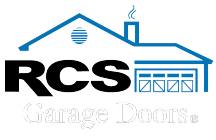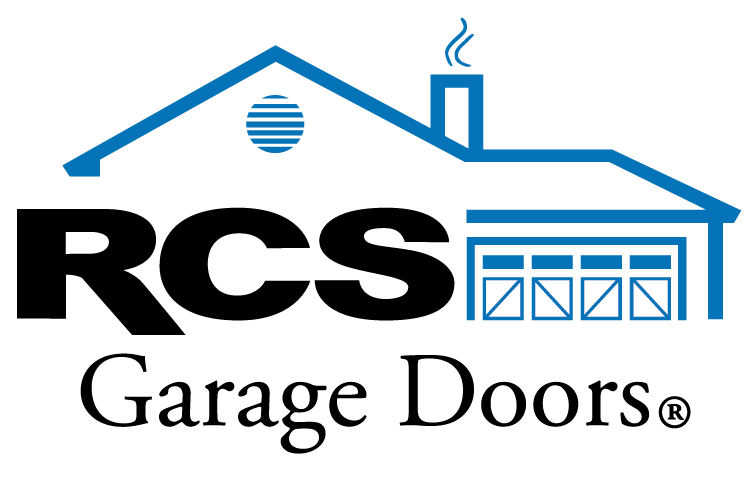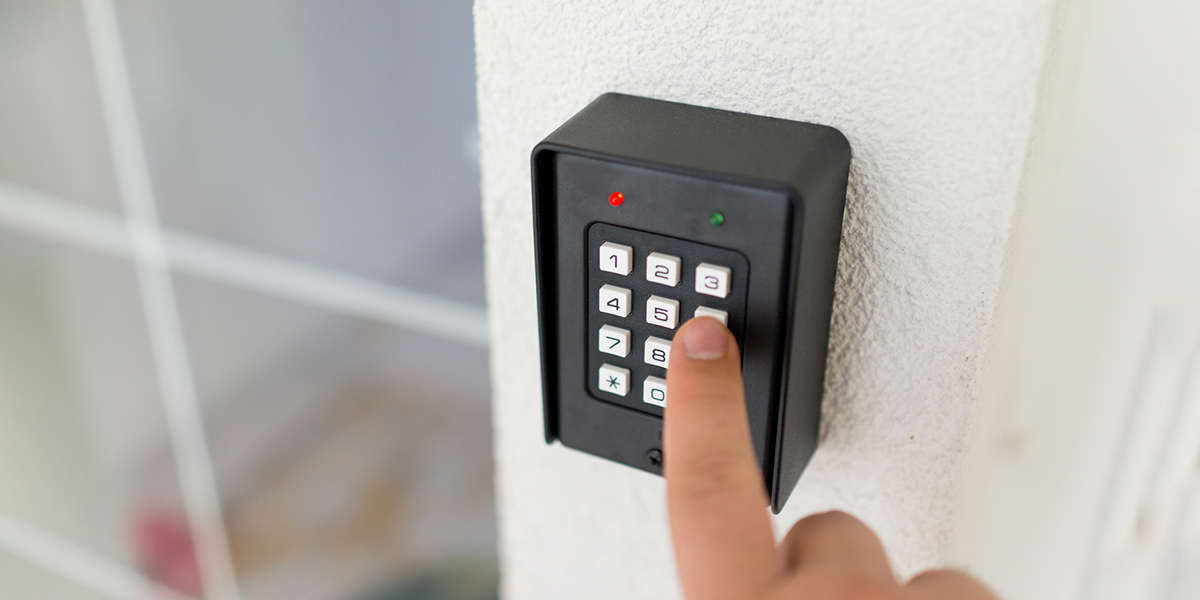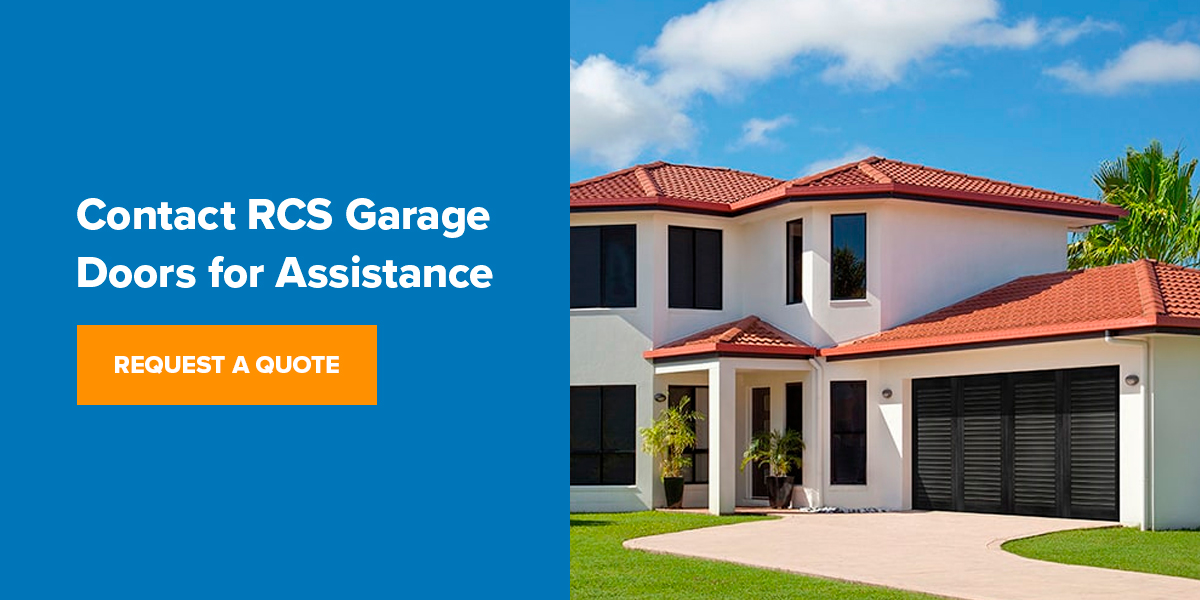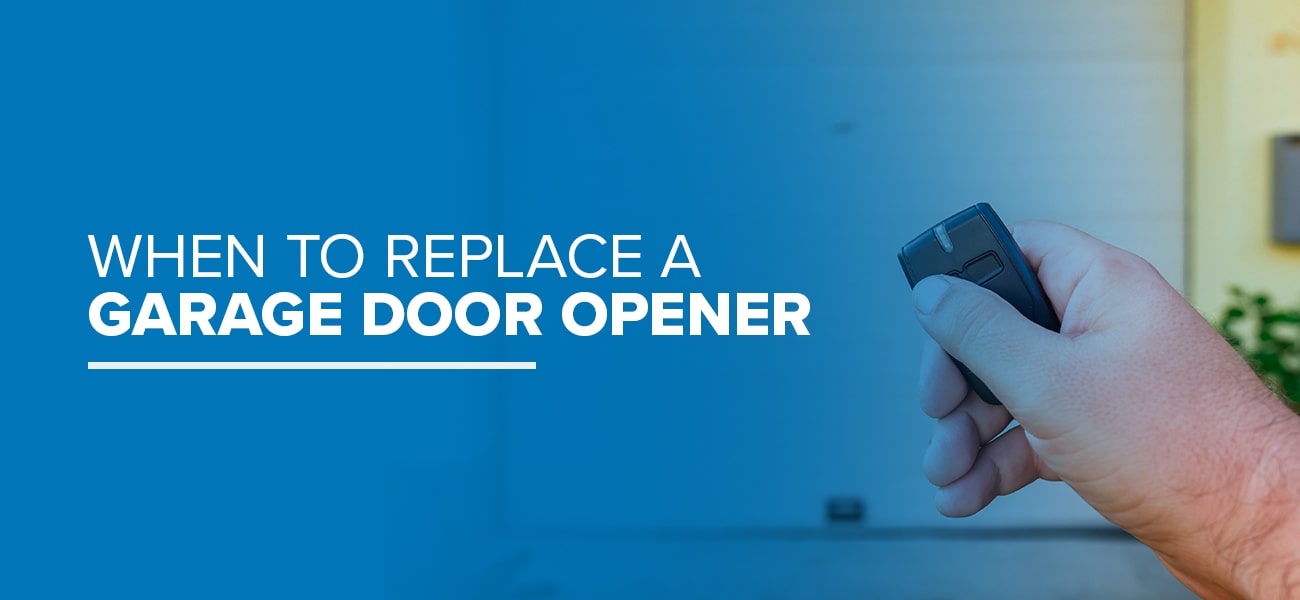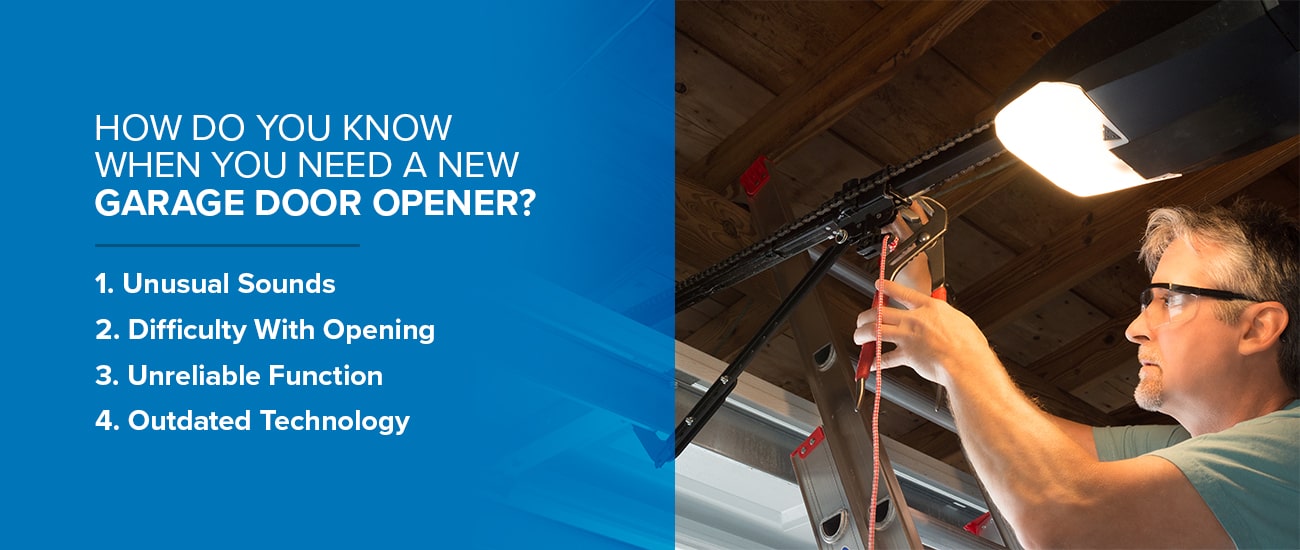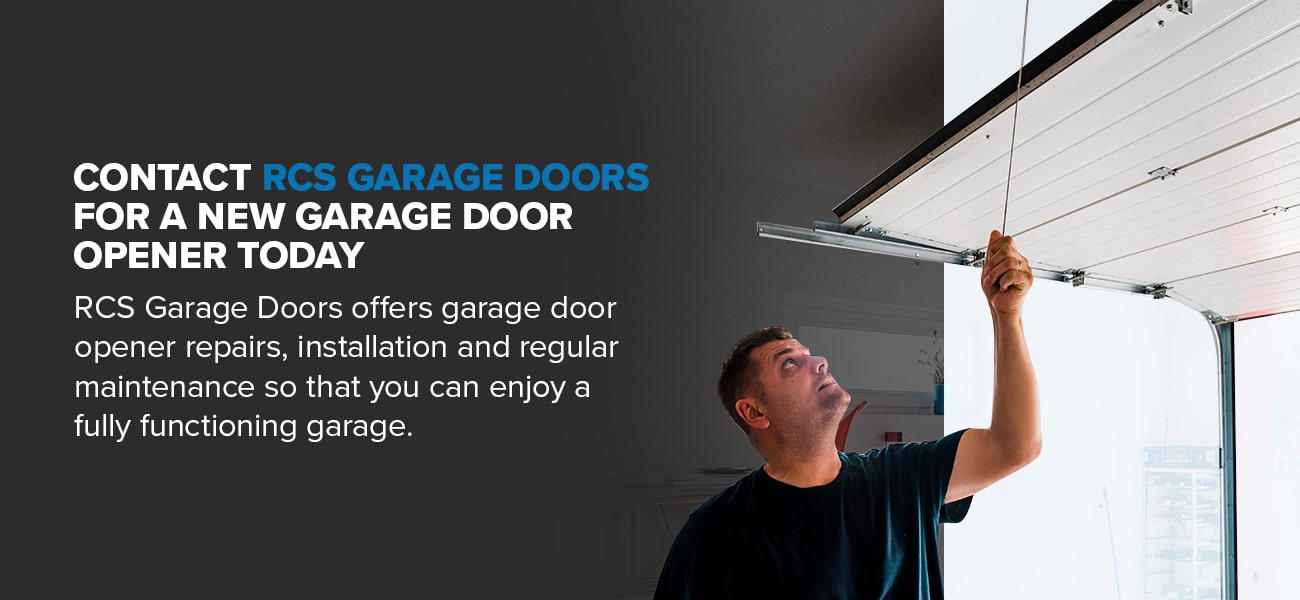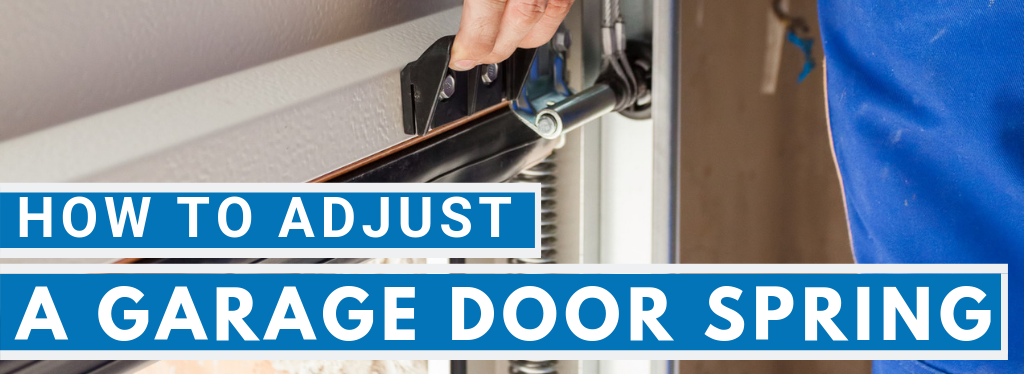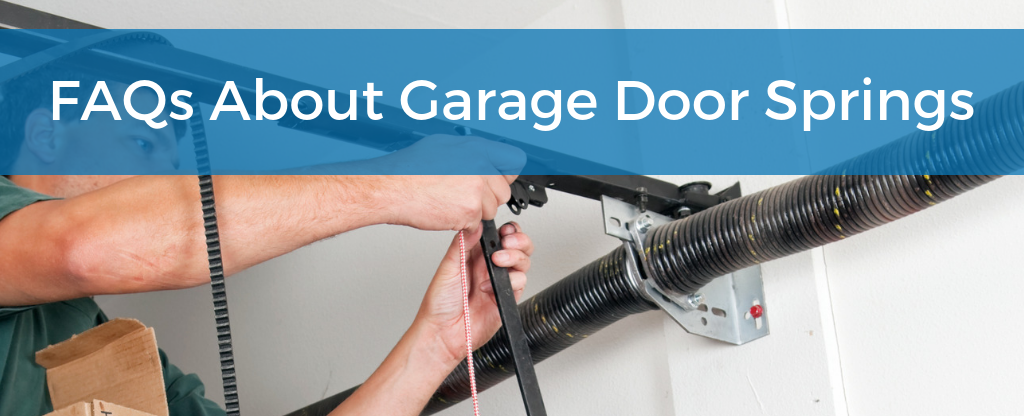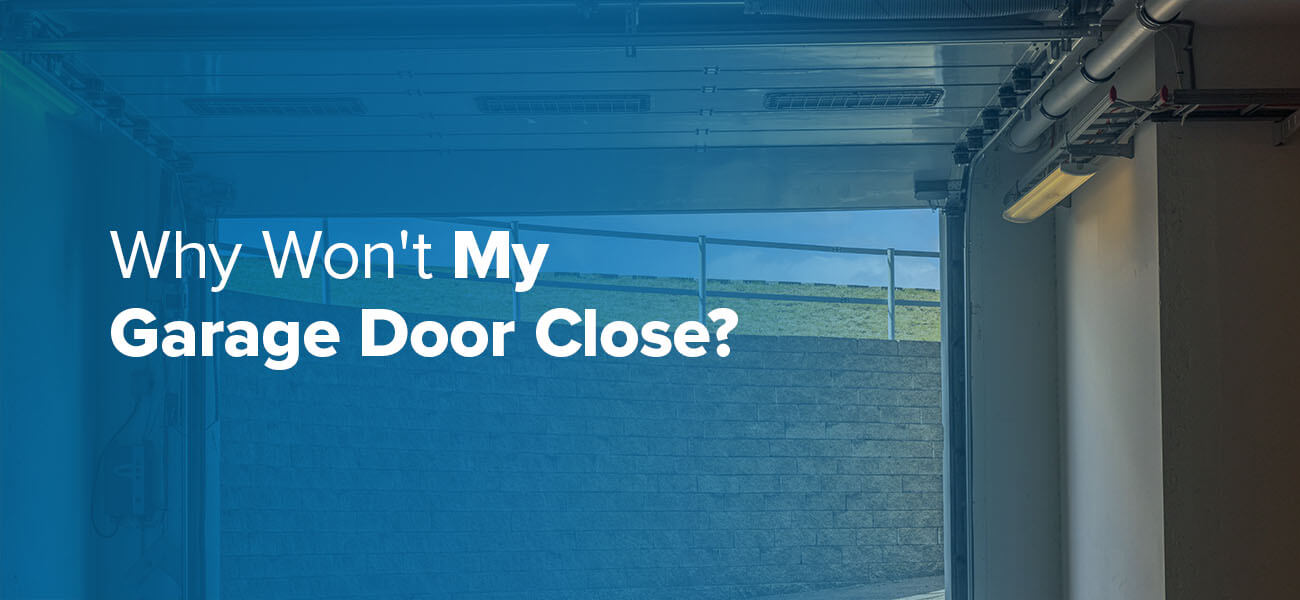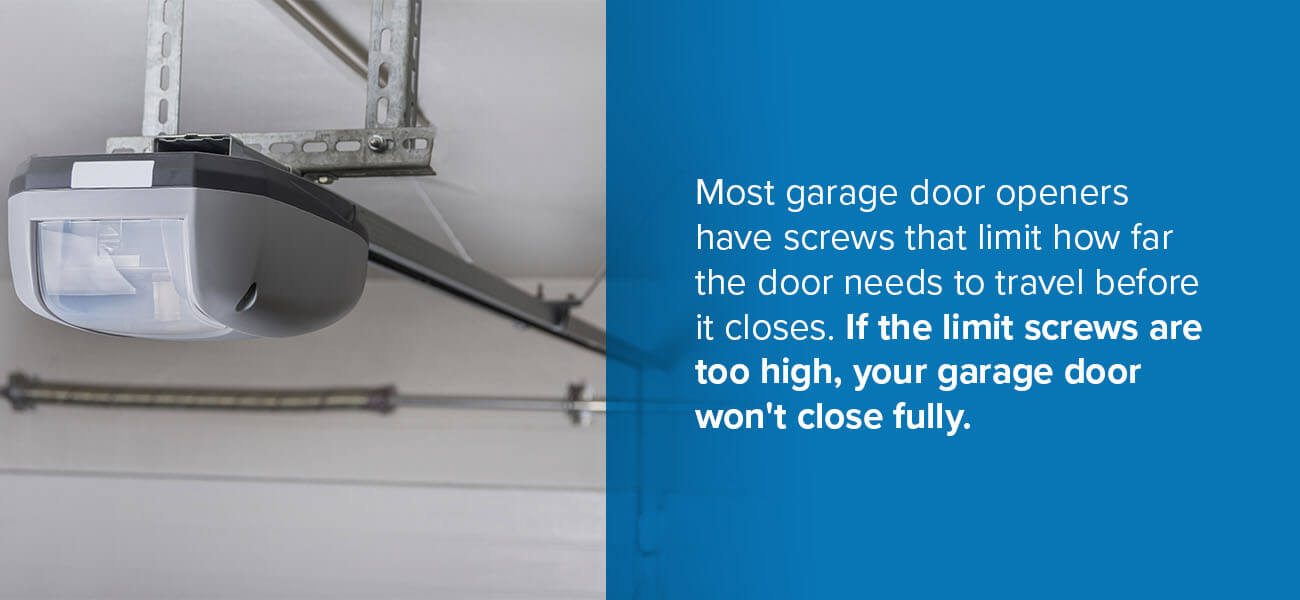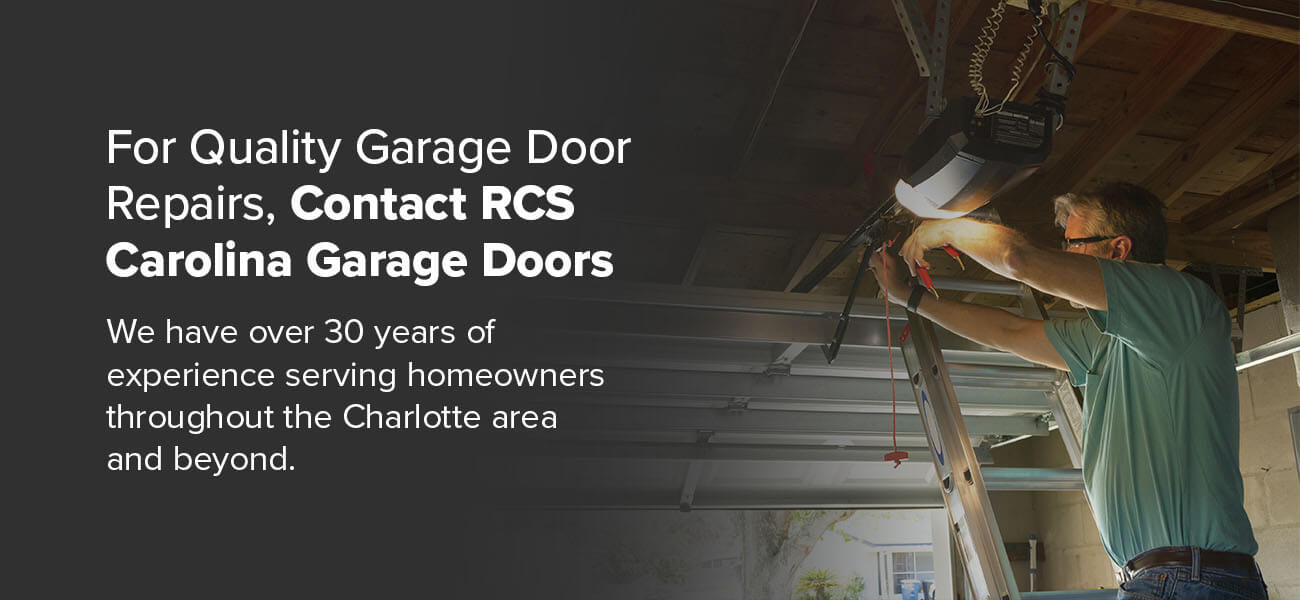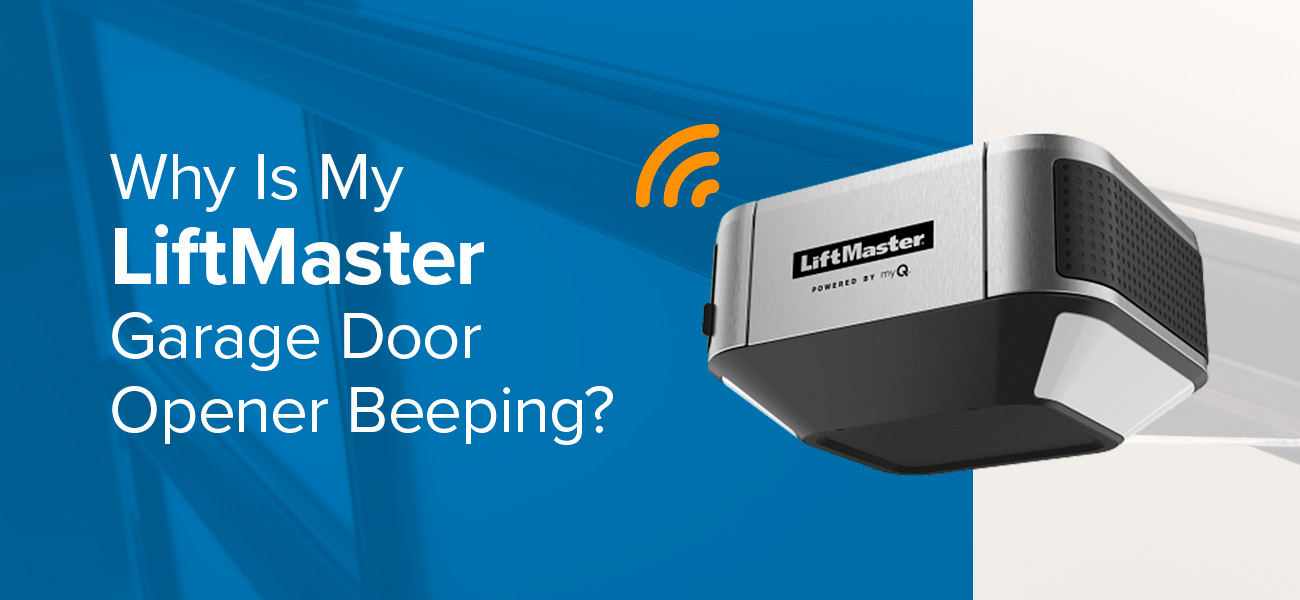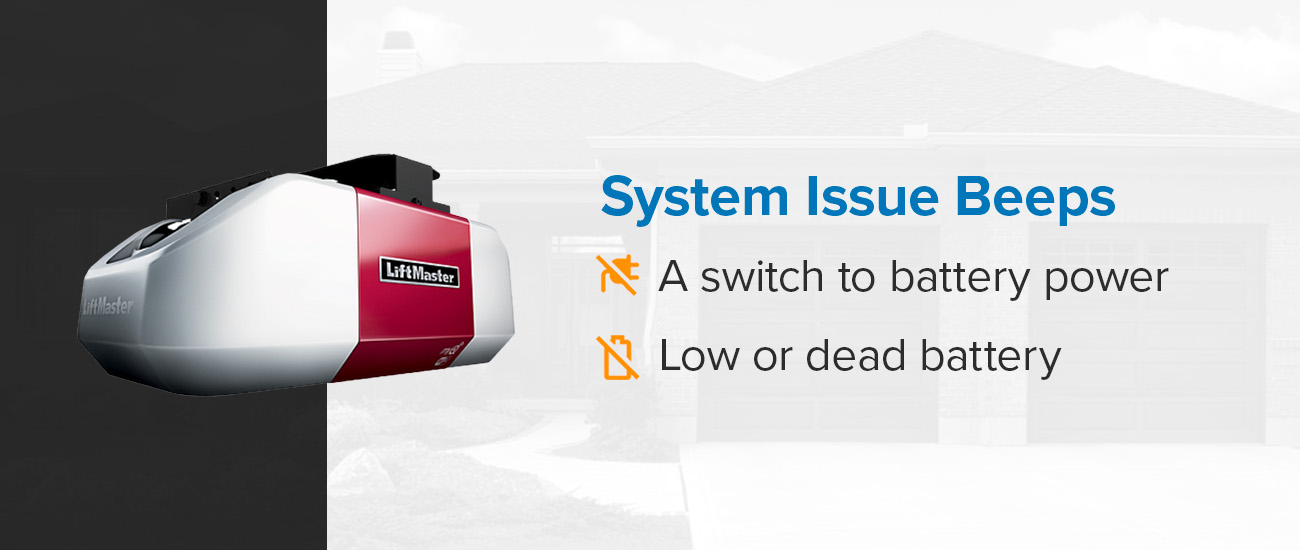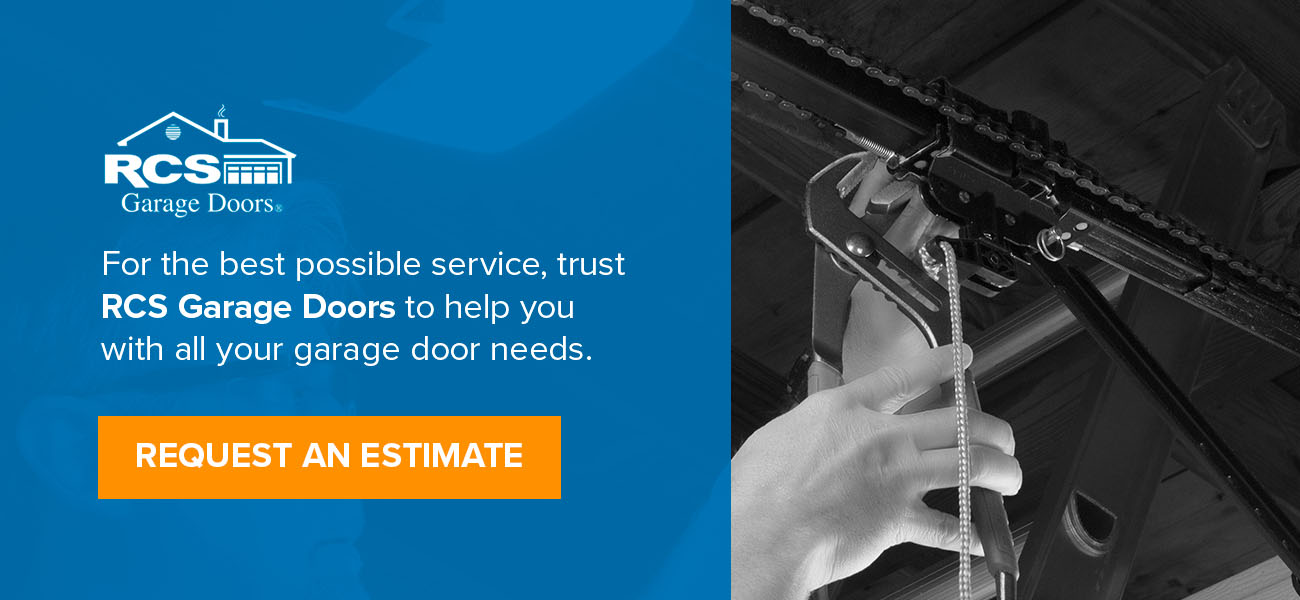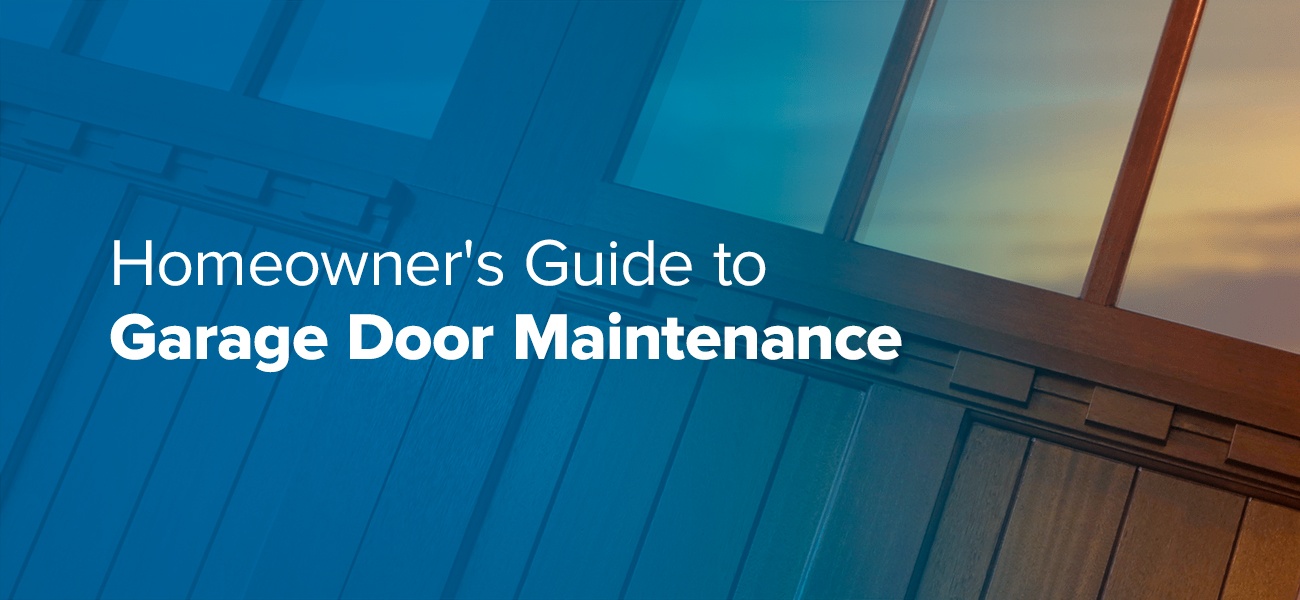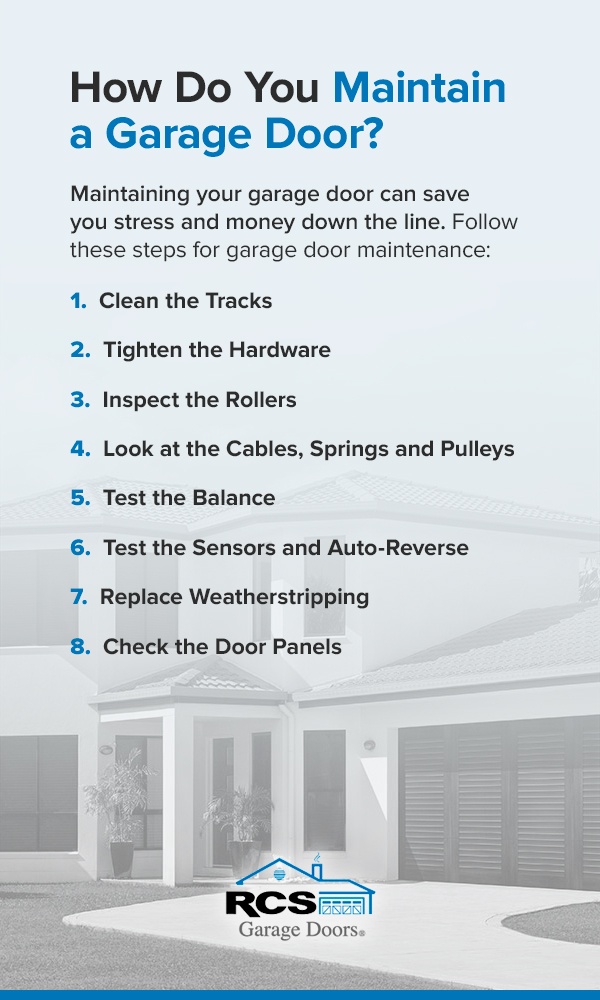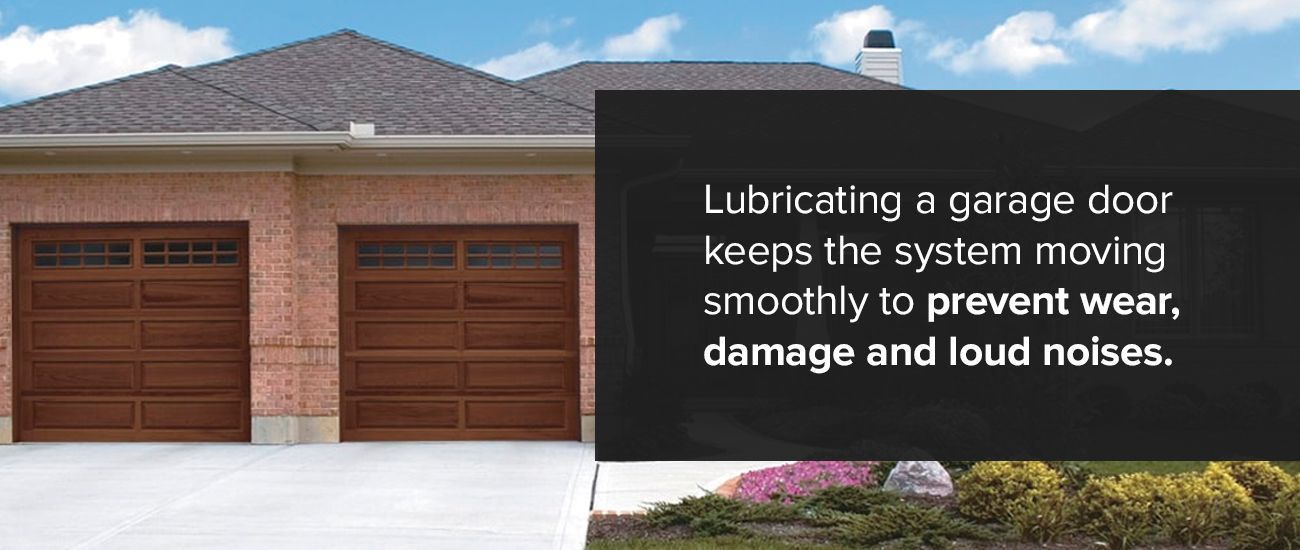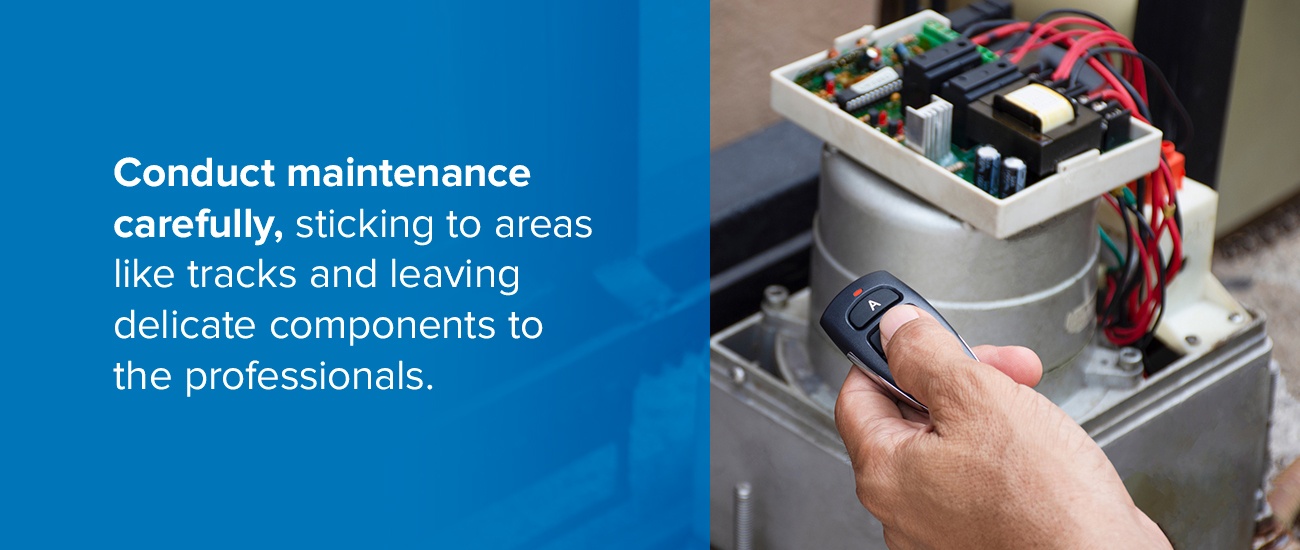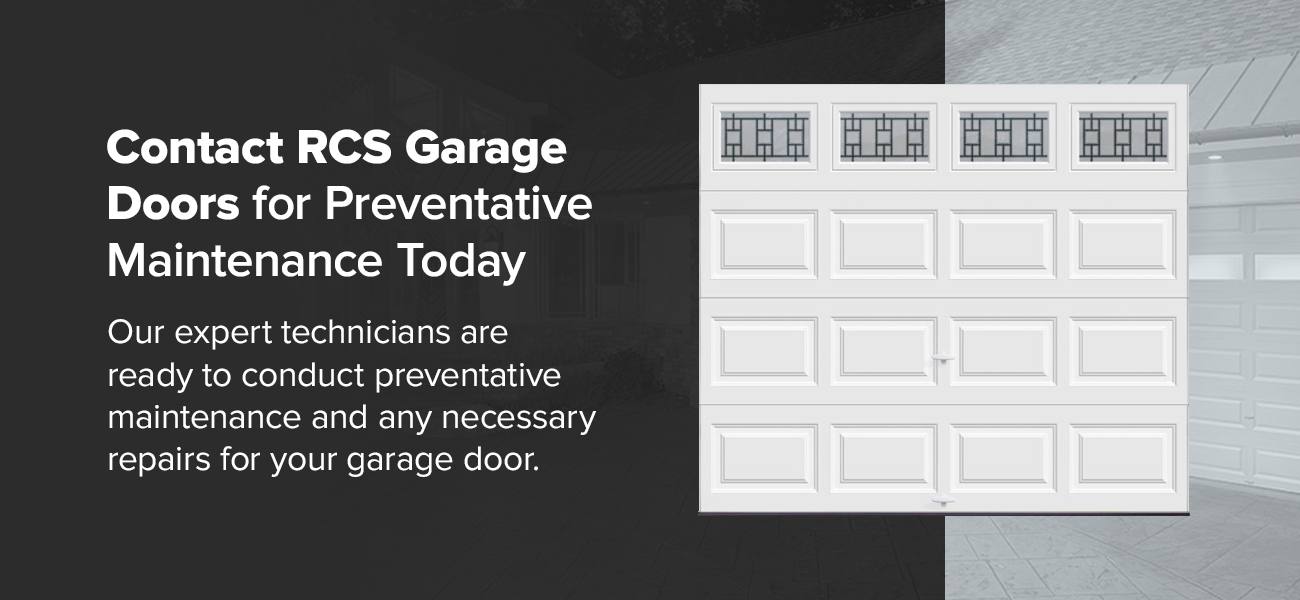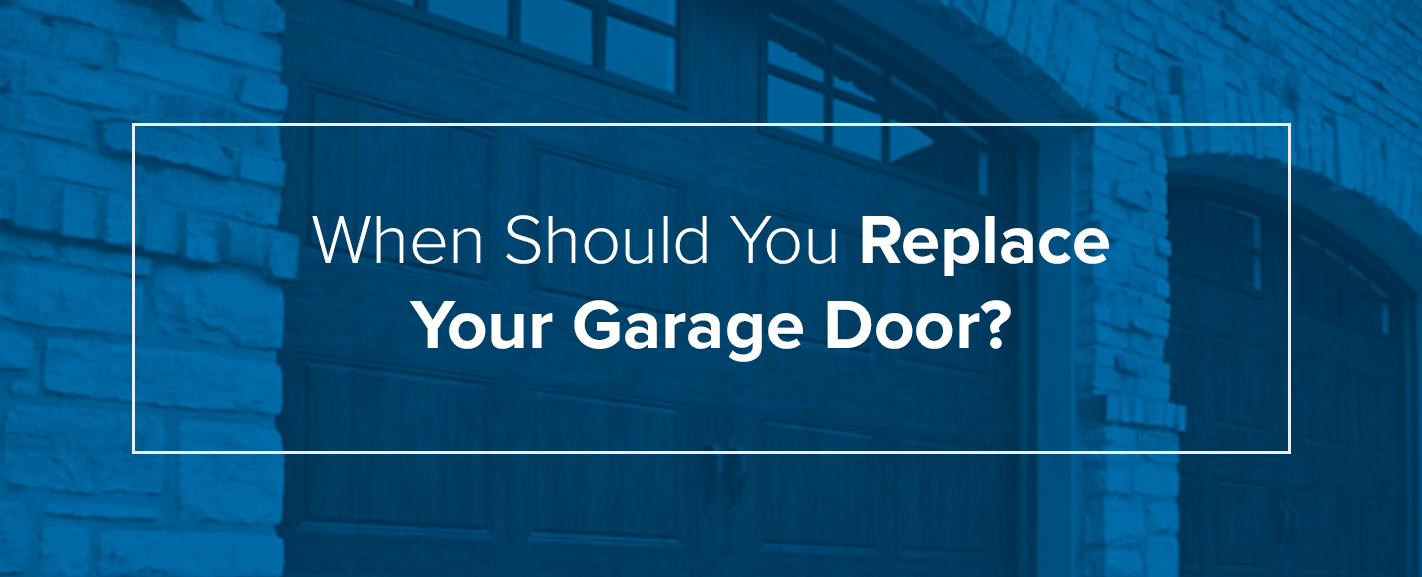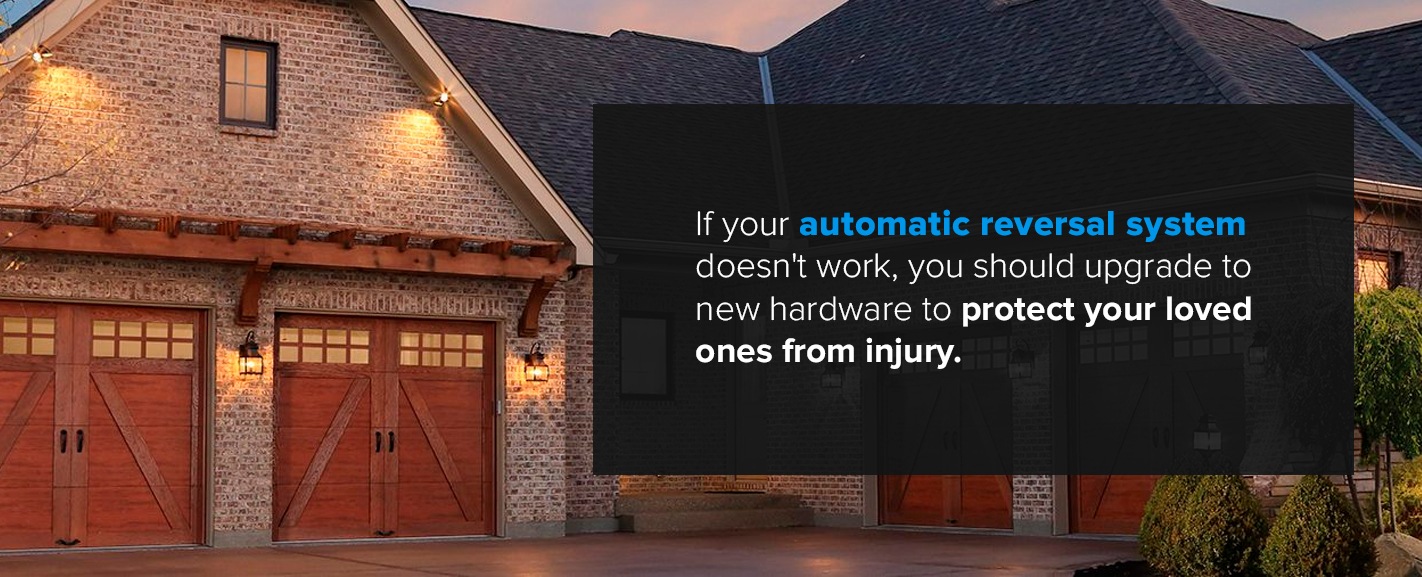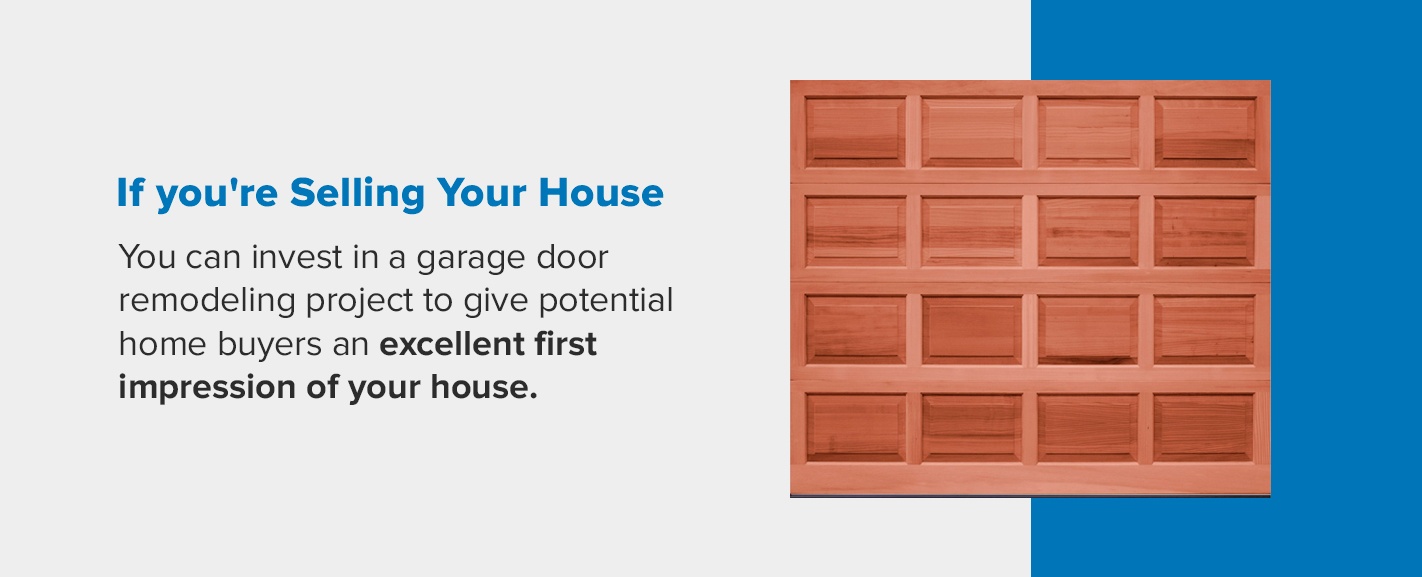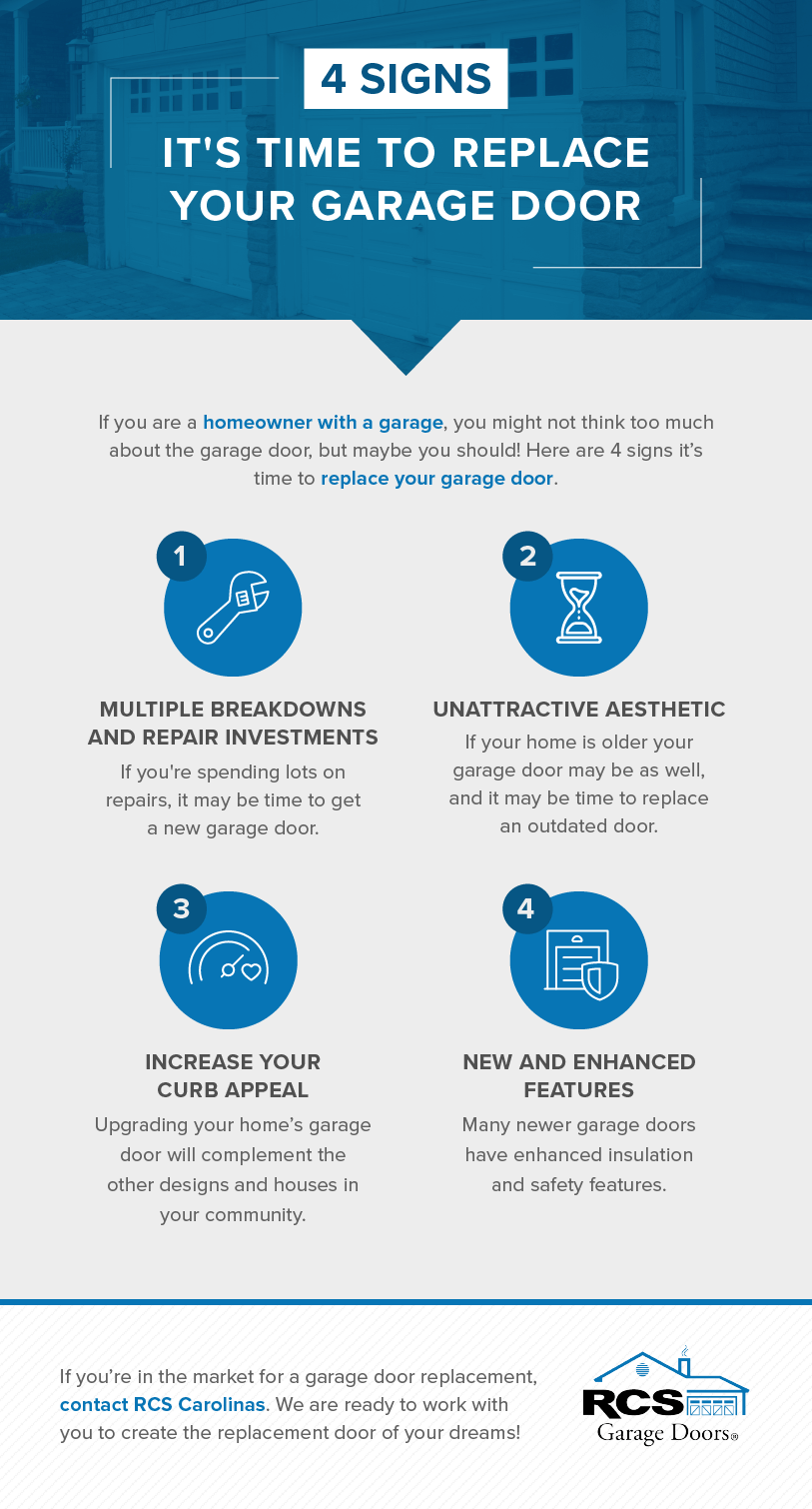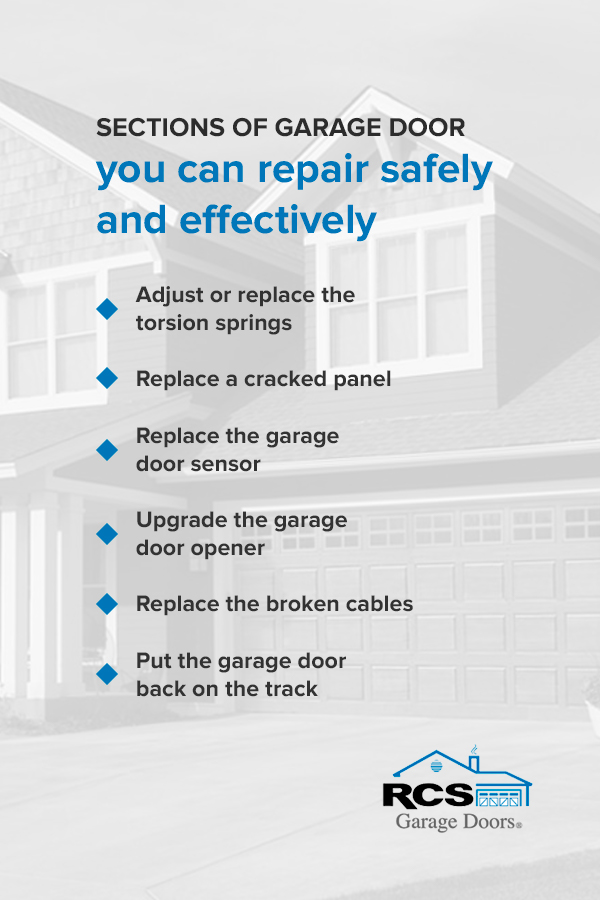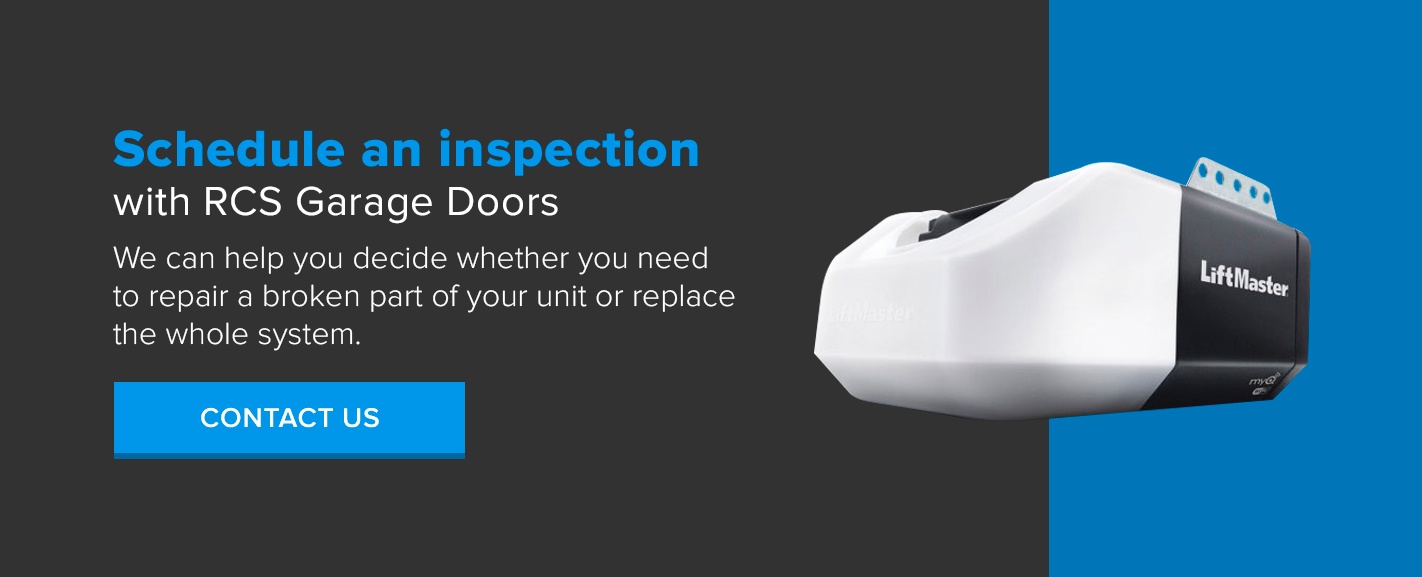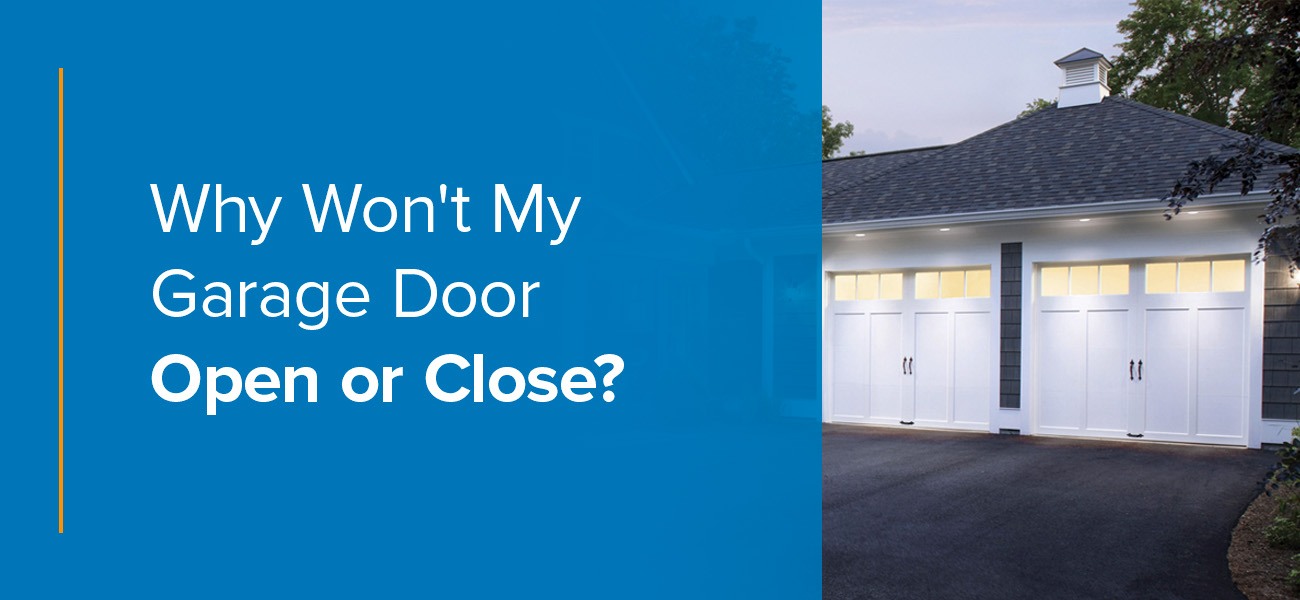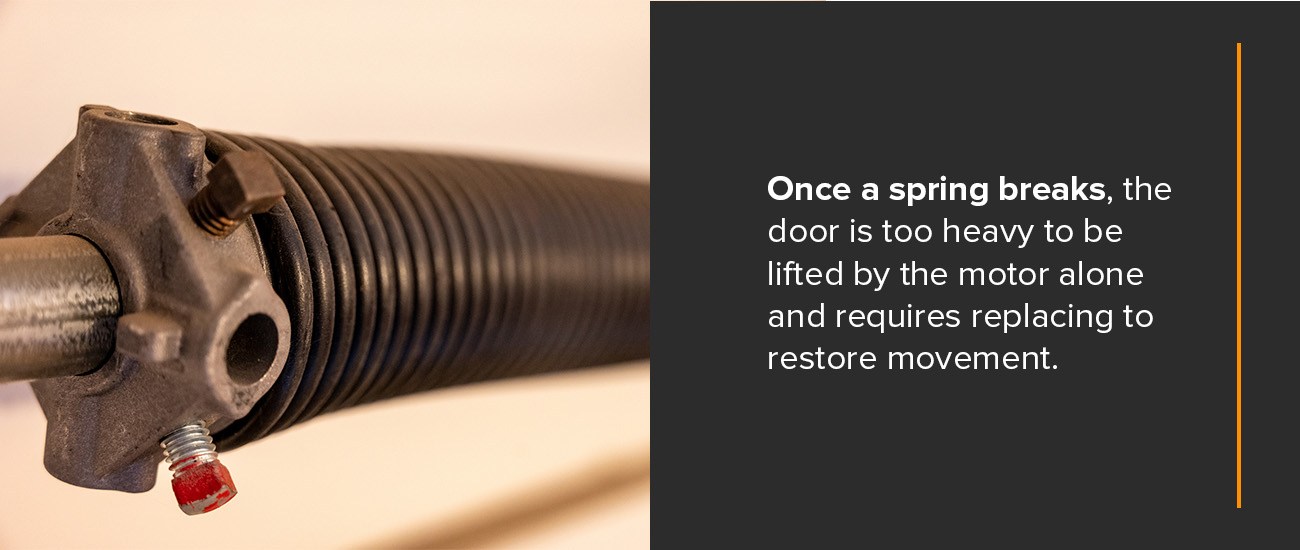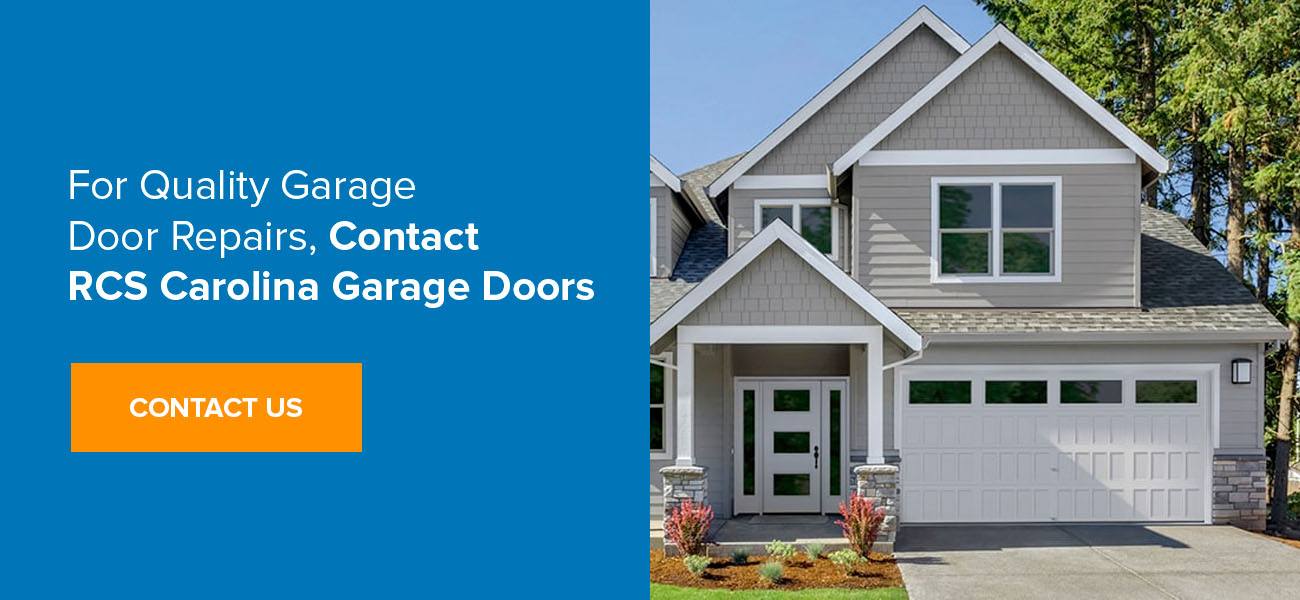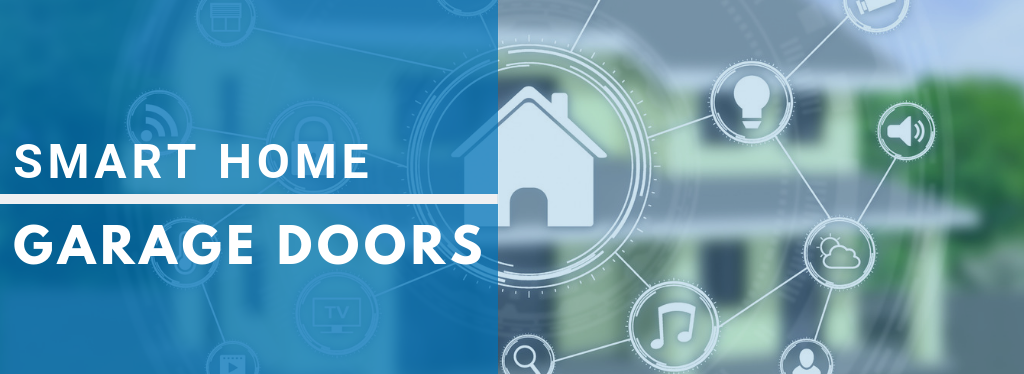How to Reset a Garage Door Keypad Code
Does your home have a keyless entry garage door? This feature offers numerous benefits, including convenience, no more worries about lost keys, increased security and a reliable alternative if you lose your remote control or it no longer works.
With a keyless setup, you only need to type in a personal identification number (PIN) to operate your door. However, situations may arise where you need to reset this personalized code.
With so many passwords to remember these days, it’s easy to forget your garage door PIN and need to reset it. It’s also advisable to change it after allowing a stranger (such as a delivery or repair person) to use it, and you’ll definitely want to reset the code if you believe an unauthorized individual knows it.
How to Program a Garage Door Keypad
Changing a garage door keypad is simple. You’ll only need to follow a few easy steps to complete the process. However, the specific actions vary based on the manufacturer. You may need to consult the owner’s manual or contact a professional garage door dealer for assistance.
How to Program a LiftMaster® Keypad
At RCS Garage Doors, we sell and service garage door openers from LiftMaster®, one of the top brands in the industry. LiftMaster products feature advanced technologies — you can even integrate them with a “smart” home setup for increased functionality and convenience.
If you need to change a garage door code on a LiftMaster model, follow these steps:
- Find the Learn button on the opener (or on the wall control unit if you have this setup). You’ll likely need a ladder or an elevated platform to reach this device.
- Hold and release the button. (You’ll need to repeat this step if your opener has a MyQ® smart control feature.)
- Within 30 seconds, key in your new PIN and press the Enter button. The code must consist of four digits. It should be easy to remember but not so obvious that a stranger could figure it out.
- Depending on which LiftMaster opener model you own, you’ll either see blinking or extinguishing lights to indicate a successful reset.
- Wait 10 seconds and test your new code.
Contact RCS Garage Doors for Assistance
If you have trouble changing the code or the garage door keypad is not working, the knowledgeable professionals at RCS Garage Doors are ready to help. Reach out online or by phone whenever you need us, and we’ll be happy to assist you!
When to Replace a Garage Door Opener
Table Of Contents
How Long Do Garage Door Openers Last?
How Do You Know When You Need a New Garage Door Opener?
6 Benefits of Upgrading Your Garage Door Opener
Contact RCS Garage Doors for a New Garage Door Opener Today
Does your garage door opener look like it’s straight out of the ’80s? Do you worry about waking up your neighbors every time you open your garage in the morning to go to work? Do you have to perform a quasi-rain dance to get your door to open or close? If you answered yes to any of these questions, it may be time for a new garage door opener.
You can’t underestimate the importance of your garage door opener. Your opener is responsible for opening and closing the largest moving component of your home, which, for nearly 70% of people, is a primary point of entry.
There are two parts to a garage door, the door that creates a barrier to the outside and the opener that lifts the door and lowers it down multiple times per day. Without a properly functioning opener, your garage door becomes an impenetrable wall.
Garage door openers are simple in design but rely on a series of delicate pieces to lift a hefty door. If one or more parts malfunction, your garage door will have difficulty opening and closing or become incapable of moving at all.
You rely on your garage door daily, and it can be challenging to manage with a broken opener. Maintaining your garage door opener and knowing when to replace it will ensure that your garage door is always working so that you can focus on more important things.
Learn More About Our Garage Door Opener Services
How Long Do Garage Door Openers Last?
The average garage door opener‘s lifespan is between 10-15 years. An opener can last for more or less time, depending on how you take care of it. Most people use their garage doors thousands of times per year. Scheduling professional maintenance once or twice per year can help your opener keep up with daily use.
Technicians will inspect the individual pieces of the opener. They may suggest a replacement spring, roller or cable if any appear worn out. To keep everything running smoothly, they will clean out the track and lubricate all of the moving parts so that your door can open with ease. If your door is unbalanced, they can adjust the pressure on the springs and ensure that the automatic reversal is working properly. Regular maintenance can extend the life of your garage door opener by several years.
If you have a vintage garage door opener that still functions fine, you may still consider a replacement. Today’s openers come with modern features for added safety and convenience. When it’s time for a replacement, RCS Garage Doors offers the highest quality LiftMaster garage door openers complete with the latest technological advancements.
How Do You Know When You Need a New Garage Door Opener?
When it comes to your garage door opener, it’s best to replace it before a malfunction. If you wait for your garage door to break, you may find yourself late to work one morning because the garage door is stuck shut with your car trapped inside.
Pay attention to these signs that your garage door opener is failing:
1. Unusual Sounds
Perhaps you’ve grown accustomed to the scraping sound that you hear when the garage door opens every morning. Maybe you’ve assumed that it’s getting older, so that sound is normal.
Loud noises are a sign that there is a problem with your garage door opener. If you hear grinding, screeching or rattling when your door is in motion, you may need to upgrade your garage door opener.
2. Difficulty With Opening
A garage door weighs over 200 pounds. The motor of your garage door relies on a system of springs and pullies to open and close. A defective garage door opener will be unable to lift your garage door properly.
A garage door that has difficulty opening might:
- Get stuck up, down or in between.
- Open halfway and reverse.
- Move very slowly.
- Lift the door unevenly.
- Shake while opening.
If you notice any of these signs, you will likely need a garage door opener motor replacement.
3. Unreliable Function
If you have a busy schedule, you depend on your garage door to function properly so you can tackle the day. You don’t have time to wait 20 minutes for your garage door to start working again.
Garage doors can go through patterns where they work on some days and don’t on others. If this pattern is happening to you, then you should consider replacing the existing garage door opener.
Call Us For A Quick Appointment!
4. Outdated Technology
If your garage door opener is stuck in the past, you can bring it back to the future with a LiftMaster garage door opener. Modern garage door openers come with amazing new features to make your life easier.
Don’t miss out on the benefits of upgrading to more advanced technology to enhance your garage door. Innovative garage door openers are also much safer, protecting your home and your family.
6 Benefits of Upgrading Your Garage Door Opener
Besides making your garage door functional again, there are many other benefits to installing a garage opener replacement.
1. No More Remotes
Today’s garage door openers are smarter than ever before. Many garage door openers are now able to connect to the Internet, allowing you the most options, safety, and security available in history.
Control your garage door anytime, anywhere with LiftMaster’s MyQ technology. With a Wi-Fi-connected garage door opener, you can open and close your garage door from your smartphone.
You can also use this technology to set up mobile alerts, so you can be notified when the garage door is being used. If you’re uncertain whether you closed the garage door after washing your car, simply log into your phone and check. If the door is open, you can close it without getting up from the couch.
With the ability to control your opener from across the globe and receive notifications about your garage door’s usage, you can travel — and live — with more confidence.
2. Reinforced Security
An automated garage door opener has added safety features that go far beyond a traditional lock and key. Here are some of the latest advancements in security:
- Lighting: Automatic lights will keep your garage illuminated to prevent break-ins.
- Vacation mode: You can set your garage door to vacation mode to prevent intruders from entering your garage while you travel.
- Anti-theft technology: Experienced burglars can hack into the frequency of garage controls, but rolling code technology prevents anyone from stealing the communication code between your garage door remote and the opener motor by automatically changing the access code each time the garage door is opened or closed. With more than a billion possible code combinations, this system makes it virtually impossible for anyone to break into your garage with a stolen code.
- Guest codes: You can create temporary codes for guests to access your home while you’re away. These codes will deactivate later to improve the security of your home.
Schedule An Appointment Today!
3. Additional Safety
In the past 25 years, garage door safety has made tremendous strides. Prior to 1993, it was not required for garage door openers to have automatic reversal systems, which resulted in many garage door-related accidents and injuries.
In 1993, it became a requirement for openers to be equipped with two automatic reversal systems: one mechanical and another based on sensors.
The first is triggered when the leading edge of the garage door encounters an object or person. Upon making contact the reversal system engages and automatically reverses the door.
The second reversal system relies on a pair of photoelectric sensors, one located on either side of the door threshold. The two sensors are connected via an invisible beam of light, which if broken, forces the door to reverse.
The most recent garage door openers come with an auto-reverse feature that detects objects in the way using photo eye sensors. If there is anything below the garage door, it will stop closing automatically and retract upwards. They are also equipped with emergency batteries so that your door can open when the power is out. Even though you have manual controls, you can avoid pulling your garage door open by hand in the pouring rain. If you have to evacuate in a hurry from a storm, you can easily exit your garage.
A fully functioning garage door opener makes it look easy to lift your garage door, but they actually weigh as much as an adult person. If they fall on a pet or family member by mistake, it can cause serious injuries.
4. Noise Reduction
Most older openers use chain drives or steel cables to raise and lower the door. Although strong and reliable, chain and cable drives create a lot of noise when opening and closing the garage door. Today’s opener manufacturers opt to utilize rubber belts instead of chains or cables, allowing for quieter operation. Similar to automobile tires, these rubber belts are reinforced with metal fibers, providing the belts with equal or greater reliability than its chain and cable counterparts.
In addition, opener manufacturers have begun using DC-type motors rather than AC-type motors, due to their reliability. Along with being more reliable than AC motors, DC motors are also quieter. AC motor openers begin the opening and closing process with a significant jerk as the motor hits its top speed immediately. This not only is hard on your garage door, but it can also be loud. DC motors begin the opening and closing process slowly, gradually increasing to regular speed, and then slowing down again before coming to a complete stop to prevent the door from slamming.
5. Less Maintenance & More Convenience
A wise garage owner will have their garage door inspected at least once per year, but you will likely run into fewer challenges with a new garage door opener.
A brand-new opener will require little to no repairs compared to an older model that is starting to wear out. Replacing your existing garage door opener can make your life easier. You can worry less about whether your garage door will open that day and enjoy all the new features of a new opener instead.
Contact RCS Garage Doors for a New Garage Door Opener Today
Our experts at RCS Garage Doors make it easy to replace a garage door opener. Don’t hesitate to contact us with any of your opener questions. We are proud to offer the latest in opener technology from industry-leading manufacturer LiftMaster, and we are sure to have the perfect opener for you!
RCS Garage Doors offers garage door opener repairs, installation and regular maintenance in Charlotte, NC and additional areas so that you can enjoy a fully functioning garage. Contact us today to schedule an installation for your new garage door opener.
How to Adjust a Garage Door Spring
Table of Contents:
- Different Types of Garage Door Springs and Cables
- Handling Problems With Garage Door Torsion Springs and Cables
- DIY Spring Repair
- Get Help From Experts
Your home’s garage door is a complex system of moving parts working simultaneously to provide you with convenient, reliable and secure entry to your home. With consistent daily use, it’s common for several parts of your garage door to succumb to normal wear and tear over time. Most at risk are springs and cables, which are under an extreme amount of tension, weight and pressure. There are many reasons why garage door springs or cables may snap/break, including:
- Aging/repeated use
- Lack of maintenance
- Objects striking the door
- Items jammed in the tracks
- Aggressive lifting/closing actions
If this occurs, you may find that your garage door does not want to open when prompted, will only partially open or may hang at an angle. If a garage door spring or cable has broken, the door is essentially out-of-service until a repair or replacement can be completed.
Call Our Service Team For Help
To understand the problem your garage door is experiencing, it’s important to get some background information on the equipment you’re dealing with.
Different Types of Garage Door Springs and Cables
Of your garage door’s system, the springs and cables are among the most important pieces contributing to smooth, safe movement. These parts use force to counterbalance the weight of the door and control its overall motion and tension, allowing the garage door to easily move up and down. When making repairs to your garage door, it’s important to understand what type of cable and spring system your door has. Most doors either have torsion or extension spring and cable operations.
- Torsion Springs and Cables: Of the two types of springs, torsion springs are the most commonly used in today’s garage doors. Torsion springs sit at the top of the garage door and slide into a channel while the door is in operation. These springs are available in several sizes based on the garage door’s weight, height and track radius. Along with the torsion spring are cables that are attached to the bottom of the door with a loop at one end and a stop at the other.
- Extension Springs and Cables: While an older garage door spring option, extension springs are still popular because they’re less expensive than torsion springs. They occupy less overhead space because they’re installed on either side of the door and extend when it’s opening and closing. Extension cables are available in standard options that are attached on each side of the door or as safety cables that are threaded through the spring. If the spring breaks, the cable will catch both ends and prevent it from flying throughout the garage.
Handling Problems With Garage Door Torsion Springs and Cables
When your garage door springs and cables are too loose, you’ll notice your door struggling to open — the door will be too heavy for the opener to raise and lower alone. Before you break out your tools and try to begin any garage door spring tightening tasks, it’s important to note that because the springs are under extreme weight and tension, it’s remarkably dangerous for inexperienced homeowners to make repairs or garage door spring adjustments themselves.
A garage door’s springs, drums, brackets and lifting cables work together to make your door function properly, and you’d need to know how each works in conjunction with the others to attempt a repair. Without the right tools and knowledge, you could cause serious injuries to yourself and those around you. A malfunctioning spring can cause your garage door to slam shut on anything in its path. This exact situation has caused many lacerations, broken bones and even deaths. That’s why it’s essential to trust your garage door spring repair to a qualified service professional.
A garage door professional will examine your door for any potential problems before using the proper tools to perform a repair. They’ll secure the door in place and tighten the spring to ensure a proper fit. While the technician is tightening your garage door torsion spring, they can also adjust the cables if needed by moving them further down the frame, securing them into a new hole and using pliers to make sure the cable bracket is taut.
Why DIY Spring Repair is a No-No
Due to the inconvenience the situation of a broken garage door can create, it stands to reason that it should be taken care of as soon as possible. However, many homeowners think they can take the do-it-yourself approach here, as they would for many other projects around the home. However, we highly recommended against DIY garage spring repair due to potential safety risks and vulnerabilities for homeowners, their families and their property. Here’s why:
“My neighbor did it, I should be able to do it, too.”
The counterweight system, which is secured by the springs, is connected to the hinge at the bottom of the door, to the lifting cable and to the steel shaft housing the spring. The entire system is under extreme tension, equivalent to the total weight of the door. Trying to lift the bottom hinge that is solidly bolted to the door is like lifting anywhere from 125lb (single door) to 225lb (double door). If you also have a row of windows on your door, add about 5 to 15lb per window. One false move and you could end up injuring your face or hand.
“Only one of the two springs broke.”
Even if you think it’s only 50% of the weight of the door that’s being held, you should know that it’s still too much. The most important thing is your safety – especially avoiding any serious injury. In the end, you also have to properly balance the two springs in order to prevent your door from rebounding.
“My garage door opener will hold the door.”
The drive mechanism that pulls the door to lift or lower it wasn’t designed to hold that much weight. A garage door opener is simply a substitute for human action; as if you were to lift your door with one hand. A well-balanced door weighs between 8 and 10lb and the acceptable variance for proper balance is around 5% of the total weight of the door.
Do business only with licensed professionals. Garage door spring repair requires experience and expertise. It is important to correctly calculate the total weight of your garage door, including any attached parts while also accounting for the weight of the windows if any. The reality is, only garage door professionals are legally prepared and educated to perform these fixes. Trust the professionals to protect your safety as well as others’.
Your home’s garage door is the largest access point and as such is the biggest security concern. That means you want to be sure it stays in top working order at all times. Besides making sure that the integrity of the garage door itself is maintained, you should also pay attention to the operation of the garage door springs. Here are a few of the most frequently asked questions about the springs, also known as torsion springs.
- Why do replacement garage door springs come in a two-pack? Both springs on your garage door are getting the same amount of wear and tear, so if one has broken, you should go ahead and have both replaced as the other is not far behind. As a side note, if you happen to have a garage door that was installed with just one torsion spring, ask about converting it to two as it is a better option overall and isn’t that much more expensive to replace two than it would be for just one.
- If the new springs look exactly the same and are the same length, do I have the right ones? Maybe, or maybe not. There is more to garage door springs than length and appearance, so when in doubt, consult with a professional. Using springs that aren’t rated for your garage door could result in problems down the road even if you do manage to get them installed.
- How often should I have the garage door springs replaced? Garage door springs don’t have a “best by” date – their lifespan goes by how many cycles they have been put through. If you use the door quite frequently, you’d be looking at 3-6 years; infrequently perhaps as much as 9 or 10 years. Regular maintenance visits are the best way to keep an eye on them so they can be changed when they show signs of wearing out.
If you have additional questions about garage door springs or you would like to have yours inspected and/or replaced, contact us.
For Help With Your Garage Door Spring Adjustment, Call RCS Carolina Garage Doors
Making adjustments to your garage door can be hazardous for inexperienced homeowners, so when you need to tighten your garage door springs and cables, trust the highly trained and knowledgeable technicians at RCS Carolina Garage Doors. We have decades of garage door repair and maintenance experience throughout North and South Carolina, including the Charlotte, Huntersville and Matthews areas.
If a broken garage spring or cable is causing an inconvenience for you and your family, you can rely on the technicians at RCS Carolinas to be equipped with the tools and training to get your garage door back in working order, and don’t forget about our 24/7 emergency response service. We look forward to serving all your garage door needs, including repairs, maintenance, and replacement garage doors.
To learn more about our garage door spring adjustment and repair services, call us today at 704-523-8063 or complete our online contact form to request services.
Call (704) 523-8063 for Repair Service
Why Won’t My Garage Door Close?
When leaving for work this morning or returning home, was your garage door refusing to close? While an uncooperative garage door is inconvenient for homeowners, several possible explanations exist for why your garage door is not closing.
The most typical reasons your garage door won’t close are mechanical issues or a garage door opener motor malfunction. You can repair some of these garage door issues with minor adjustments. Other problems are too complicated or hazardous for homeowners to replace themselves and require the assistance of a local garage door repair company.
Call Our Service Team For Help
Why Won’t My Garage Door Close?
If you’re dealing with a garage door that won’t close, it’s more than a harmless nuisance. Most homeowners store valuable possessions in their garages, such as vehicles, bikes, tools and much more. A garage door that stays open even a little bit invites critters, pests and passersby inside. The purpose of the garage door is to protect your home and belongings from such invaders. So if it isn’t closing, it’s not serving its purpose.
As you look for the cause of your garage door closing problems, note whether the garage door won’t close all the way, won’t close with the remote or if the motor is running but the door won’t lower. If your garage door won’t even close manually, you have a serious problem.
To determine why your garage door is malfunctioning, it’s best to understand the possible causes and try several safe troubleshooting methods. That said, before you go to great lengths to determine the cause, make sure you check the power source! Although this may seem obvious, it’s also easy to forget. Once you’ve made sure the garage door opener is receiving power, check out these common causes of garage doors that refuse to close.
Faulty, Obstructed or Dirty Sensors
One of the most common reasons for a garage door that won’t close is faulty or dirty sensors. Your garage door sensors are located near the bottom of your garage door, approximately 6 inches above the ground. They face each other and send signals across the garage door width. These signals detect any object, person or animal in the garage door path and prevent it from closing.
Sensors are watchful eyes that keep you, your loved ones and your possessions safe. Yet the sensors aren’t foolproof 100% of the time. They may mistake a speck of dirt in their line of sight for something that requires saving, for instance, and heroically stop the garage door from going further. Other times, there may be an issue with the sensors themselves.
A dirty sensor only needs a microfiber cloth and a little water to fix. Likewise, repairing an obstructed sensor only involves removing the obstructing object. A faulty sensor requires increased repair work or replacement.
If the sensors are clean without anything obstructing their view, check if they’re correctly aligned. Misaligned sensors send continuous obstruction signals. They may blink if they’re misaligned. If your garage door still won’t close and your sensors are aligned, make sure they receive power and check the wiring for damage. If the wires are damaged, you’ll need to replace them. If you’ve checked over everything and still can’t find the issue, it’s likely a sensor failure. If so, you’ll need a new sensor.
Bent or Blocked Tracks and Rollers
Your door tracks and rollers provide the pathway for your garage door to open and close. So if either the tracks or rollers are bent or blocked, it may prevent the garage door from closing.
The solution to blocked tracks or rollers is to remove the blockage. Another solution may be to grease the rollers with white lithium or a silicone-based product. If too many rollers are stuck, your garage door may respond like it’s hitting something.
Bent tracks and rollers can occasionally be repaired, but they usually need replacement. If you’re unsure if the bent tracks or rollers are repairable or need replacement, call in garage repair professionals for an inspection. You should also leave repairs and replacements to the professionals.
Travel Limits
Most garage door openers have screws that limit how far the door needs to travel before it closes. If the limit screws are too high, your garage door won’t close fully.
Incorrectly set travel limit screws are easy to fix. All it takes is a screwdriver and turning the screws until they are at the right setting. You can refer to your manual to determine how much you need to turn the screws.
You can find the limit adjustment screws underneath the rear flap or light cover on the opener. There will be one screw that adjusts the upward travel distance and another for the downward travel distance, labeled “up” and “down.” Make sure you use a sturdy ladder to reach the garage door opener.
Broken Springs
Having broken torsion or extension springs is a possible reason your garage door won’t properly close. Springs are designed to last a determined number of cycles before finally wearing and breaking. Torsion springs will last up to 20,000 cycles, while extension springs are expected to reliably function up to 10,000 cycles. Once the springs have broken, it may cause the garage door to become misaligned and not close properly.
If you are at home when this happens, you will likely hear it! Garage door springs sound like firecrackers or gunshots when they break. Due to the danger involved, don’t attempt to open or close a garage door with broken springs. Instead, call a professional garage door repair service to do the job. Attempting to repair broken springs or install new ones on your own can easily lead to further damage or serious injury to yourself or others nearby.
Call Us To Schedule An Appointment!
Worn Cables
Like the garage door torsion or extension springs, cables are also responsible for controlling smooth, safe and reliable garage door movement. Thus, worn cables can also disrupt proper garage door closure. Typically, when the garage door springs break, the cables will need to be replaced. Due to the dangerous nature of replacing garage door springs and cables, a professional should perform the replacement.
Dead Remote Batteries
Sometimes repairing your garage door requires the simplest solution. If you’re pressing the button on your garage door remote but the door won’t lower, then a likely cause is that the batteries are dead.
To be sure, try opening and closing the garage door with the wall switch. Garage door batteries last approximately two years before needing replacement. You can quickly and easily switch their remote batteries by removing the back panel and inserting fresh batteries.
If the remote still won’t operate the door, make sure you’re within range of the opener. If the door closes with the remote when you’re within 20 feet of it, but won’t close when you’re down the street, you’re likely out of the opener’s range.
On the other hand, your remote may need reprogramming. Having a power surge may wipe the garage door opener’s memory. In this case, your remote would lose its connection to the garage door opener.
Reprogramming remotes is a simple process. Using a sturdy ladder to reach the garage door opener, you should find a prominent “learn” button underneath the light cover or rear flap. Press this button until the light flashes, then press a button on your remote. This process should reconnect your remote to your garage door opener. Consult your opener’s manual for your model’s specific instructions.
If a remote is already programmed to the garage door opener, pressing the learn button will erase anything linked to the opener. So if someone recently pressed the learn button, that could be why your garage door is not responding to the remote.
Other Issues
Your instruction manual may hold the key if you remain stumped on why your garage door won’t close completely. Most garage door openers send codes through flashing lights when something is awry.
Count the number of times the light blinks and refer to your garage door opener instruction manual. You should find a legend in the manual that correlates the number of times the light flashed with a specific issue. If you’ve misplaced the manual or can’t see the legend, you should be able to look up the code online.
For Quality Garage Door Repairs, Contact RCS Carolina Garage Doors
For the best, most knowledgeable and reliable garage door repair and maintenance services throughout North and South Carolina, contact your local, skilled experts at RCS Carolina Garage Doors. Our professionals will do whatever they can to make sure you can close your garage door. We have over 30 years of experience serving homeowners throughout the Charlotte area and beyond. We believe in offering our customers affordable, quality garage door services using only the best products and materials available to guarantee lasting, dependable repairs. Request service today!
Why Is My LiftMaster Garage Door Opener Beeping?
Garage door openers are a wonderful piece of technology that allows you to automatically secure your garage space, keep your vehicles safe from the elements and, in most cases, have an extra barrier protecting your home. When it comes to your garage door opener, you expect it to work as intended and without any hiccups. However, as with all pieces of technology, that expectation is not always feasible. Eventually, situations arise where your garage door opener doesn’t work or does something different from its normal functioning.
One such situation is when your LiftMaster garage door opener begins beeping suddenly. If you’ve bought your home, you may not have the original instruction manual with you, so you may be at a loss on what to do to get the beeping to cease.
No one issue is the cause for the beeping. It could result from any number of problems, and finding out which one is causing the beeping is the best way to resolve the issue.
Call Our Service Team For Help
Let’s take a look at some of the most common reasons why your LiftMaster garage door opener is beeping.
Why Is My Garage Door Opener Beeping?
When your garage door opener beeps, there are two initial reasons why it’s doing so. First, it beeps to inform you it has completed a task or process successfully. Second, it beeps to inform you that something is wrong. If the former reason is true, the beeping should stop on its own. However, when the beep is from a system issue, it will continue unless you find the solution.
If left unchecked, the issue could directly impact the performance of your garage door opener to the extent that it does not work at all. Fortunately, we have compiled the most common things that could cause the beeping. You can troubleshoot your opener using these quick fixes.
Task Complete Beeps
The normal beeps you hear after a task has been completed include:
- Opening and closing: In most situations, the beeping comes as a confirmation that the garage door has successfully opened or closed.
- Timer-to-close feature: Some garage door openers have an automatic timer that closes the garage door after a set amount of time has passed. Once the timer has reached its end, the machine will beep to let you know the garage door is closing and to warn you to keep your distance. Depending on the machine you have, it may flash its lights as well, so you will have an auditory and a visual cue.
System Issue Beeps
In contrast, your LiftMaster garage door opener may keep beeping if it’s suffering these issues:
- A switch to battery power: Your garage door opener connects to a power outlet in your garage. If the power goes out or something happens to the wire, the opener switches to battery power. The machine will beep at you to inform you it is using the battery source. In most cases, a solid orange light will accompany the beeping.
- Low or dead battery: Should your machine continuously use its battery supply, it will give you a more consistent warning to let you know the battery is running low. The orange light will flash alongside the constant beeping. Replacing the battery and restoring the connection to an outlet power supply will fix the issue. Once the battery has fully depleted, it will continue to beep as normal, but the light will have changed to a solid red light.
How Do I Reset My LiftMaster Garage Door Opener?
After you’ve gone through the above troubleshooting steps, you might have to reset your garage door opener to allow the system to reconfigure itself. In most situations, you should not have to do this, but if all else fails, resetting is always an option. Keep in mind that resetting your machine will also erase the motor’s memory, so you will have to reprogram the remote and keypad entry.
To begin the process, you first need to locate the motor. It should be at the top center of the garage door area. It will look like a big metal box suspended from the ceiling. You will also want a ladder to access the control panel underneath the machine. Remove the panel and locate the small “Learn” button, which is usually next to an LED light.
To erase the memory and reset the machine, you will need to hold the “Learn” button for about six seconds. For most systems, the light next to the button will light up and then turn off. The reset will disconnect all connected devices that control the garage door opener. You will now have to reprogram them individually.
How Do I Change the Battery in a LiftMaster Garage Door Opener?
One of the biggest causes for your garage door opener beeping is the battery. If the beeping results from the machine switching to battery power, you should find the source of the issue and restore the connection to the outlet. Make sure the power is on throughout the house and the rest of the garage. If so, carefully check the cable leading from the opener to the outlet and inspect for any damages.
Once the battery has run its course, the machine will continuously beep until you replace it. To switch out the dead batteries for new ones, unplug your machine from all power sources. Once you’ve done that, you can safely open the bottom of the machine and locate the battery compartment. You will have to remove the paneling and disconnect the old battery from the red and black wires.
Then, you should install the new battery, connecting the red wire to the red terminal and the black wire to the black terminal. Finally, reattach all the pieces and plug the machine back in. If done correctly, the machine should cease its beeping.
Contact RCS for Garage Door Opener Services Today
Don’t let the constant beeping drive you crazy. With these quick and common troubleshooting steps, you should be able to safely stop the beeping by yourself. However, if you don’t feel comfortable or if the situation is more urgent, don’t hesitate to contact a professional garage door technician. They will be better equipped to fix any issues you might have.
For the best possible service, trust RCS Garage Doors to help you with all your garage door needs in Charlotte, NC and the surrounding areas. Whether your opener or the door itself needs help, we will get your garage door back in working order.
Contact RCS Garage Doors at 704-523-8063 or request service online to schedule an appointment today.
Homeowner’s Guide to Garage Door Maintenance
We’re often asked, “Do I really need garage door maintenance?” “Is garage door maintenance necessary?” To answer those questions, let’s walk through a scenario.
Imagine you’re running late to work one morning, rushing to the garage to get your car, but the garage door doesn’t open. Or, perhaps you come home, it’s pouring rain, and you’re suddenly stuck in the driveway because your garage door won’t work.
Your garage door is an essential entry point for your home, and when it doesn’t work as it should, it’s a major inconvenience. It often becomes a safety hazard and full repairs can be costly. However, proper garage door maintenance can help prevent inconveniences and dangers.
You know that garage maintenance is necessary, but how do you maintain a garage door? It may seem intimidating if you’ve never done it before. There are plenty of components, hardware and mechanisms to check. Don’t let that intimidate you, though. Preventative maintenance is essential, especially for an overhead door and its opener. In this guide to garage door maintenance, we’ll tell you what you need to know, from how to lubricate a garage door to other preventative maintenance tips.
Contact Us Today for Garage Door Services
How Often Do Garage Doors Need Maintenance?
Garage doors do need regular maintenance, but in most cases, checking your door even just twice a year will help maintain your overhead door and opener. You don’t have to look at your garage door system too frequently; taking care of things seasonally will help keep everything in working order.
Of course, emergencies or other concerns may disrupt your maintenance schedule. If you notice issues with your garage door, from odd noises to improper door operation, you may need emergency maintenance or repairs. You should also check your garage door system if you experienced extreme weather, like flooding, or if a car or large equipment runs into the door.
How Do You Maintain a Garage Door?
Maintaining your garage door can save you stress and money down the line. You just have to know what components to check and what issues to look for. This process can be easier if you break it down by garage door system components. Follow these steps for garage door maintenance:
1. Clean the Tracks
Over time, debris and rust can develop along the tracks of your garage door system. That could impact your door’s operation, as components can’t move as smoothly as they could if the tracks were clear. If your roller tracks aren’t clear, use an old toothbrush to dislodge dirt, grime or grease. Once you’ve removed significant buildup with a brush, spray the tracks with disc brake cleaner. Wipe the tracks with a clean rag to remove the cleaner and any grease or debris that remains.
2. Tighten the Hardware
Over the course of a year, you may use your garage door up to 1,500 times. As it opens and closes, the vibration of the components can loosen the hardware, from brackets to chain screws to bolts. Check that the brackets that hold garage door tracks to the ceiling and wall are tightened appropriately. Tighten any loose nuts and bolts throughout the system. While you’re checking these fasteners, replace ones that are rusted or damaged.
3. Inspect the Rollers
Over time, your garage door rollers could wear out. Check these parts with your twice-yearly maintenance checks, and know they’ll need to be replaced every five years to seven years. You’ll know you need to replace a roller if it has cracked, chipped or worn.
You might not want to attempt to remove or replace the garage door rollers yourself. The bottom roller brackets are attached to lift cables, which are under high tension. You risk damage or injury if you try to repair this component yourself without proper knowledge. Call your garage door professionals to install replacement rollers and lubricate moving parts.
4. Look at the Cables, Springs and Pulleys
These are more components you shouldn’t try to replace on your own, but you can check them for damage and wear. The lift cables and pulleys of your garage door attach to the bottom roller brackets, creating a connection from the springs to the door. The springs you have will depend on your garage door system, with either:
- Extension springs: These thin, long springs go along the overhead or horizontal part of the door tracks.
- Torsion springs: These springs are mounted above the door opening to a metal rod.
Look for broken strands, stretched springs or other wear & tear or damage issues. If you notice anything, be sure to contact a professional service technician to inspect and replace the damaged parts.
Want to DIY? Read our guide to adjusting garage door springs!
5. Test the Balance
Your garage door’s balance refers to the tension in the springs. If the tension is too high or low, your garage door isn’t in balance. When that happens, your opener will have to work harder, putting extra wear on the system. The springs and door should be in balance so it doesn’t take much force to open or close the door.
To test your garage door’s balance, pull the release handle on your automatic opener so you can operate the door manually. Carefully lift the door from the closed position until it’s opened about halfway. A balanced door will remain in that position without your help. If the door falls closed or springs open, the system is unbalanced. While you can test the balance of your garage door on your own, you shouldn’t attempt to repair it without a professional technician.
Your automatic garage door opener comes with a sensor safety feature and auto-reverse. The sensor feature reverses the garage door to open back up if it begins closing and something is in its path. This is called a photoelectric system, and it features sensors, also called eyes, on either side of your garage door opening.
To test the photoelectric system, start closing the garage door. Pass something in front of the sensor that you can remove if the sensors don’t work. The door should stop closing and reverse back to an open position. If it continues to close even as you’re passing an object in front of the sensor, you need a professional to inspect, replace or repair the safety feature.
Automatic garage doors also have a pressure sensor to prevent the door from closing all the way if something is in its path. Consult your garage door operation manual to see if your opener includes this feature, as it is now required for all automatic openers. If yours doesn’t have it, you need to replace your garage door system right away.
If you do have auto-reverse, you should test it to ensure it’s working properly. To test this feature, place a scrap wood board flat on the ground under the door. Stand clear and close the door. When it reaches the scrap wood, it should reverse and open again. If it doesn’t, you may have to consult your manual to see how to adjust the safety feature. Contact a professional for assistance and any repairs your automatic garage door opener may need.
7. Replace Weatherstripping
Garage door weatherstripping is the rubber, PVC or other material along the bottom of the door. You may also have some on the sides of your door. This material helps keep out water, hot air in the summer and cold air in the winter when the door is shut. Over time, this material can crack or peel away from the door or the garage. If you notice any problems with your door’s weather seal, it’s time to replace it.
Depending on your garage door and its weatherstripping, it could be nailed into place or slid into a groove along the door. Make sure you get the right kind of weatherstripping that matches what you currently have so you can install it correctly. Removing the damaged material and not replacing it or leaving the damaged material up could impact your garage’s temperature. It could also let in pests and water when your door is closed, so don’t skip this maintenance step.
8. Check the Door Panels
While you’re checking the other components of your garage door system, don’t forget to look at the door itself. Manufacturers make garage doors out of different materials, and how you care for your door depends on the material. See if your garage door has any of these surfaces and maintain them accordingly:
- Steel: Check for rust spots, which you’ll have to sand, prime and paint.
- Fiberglass: Wash the surface with an all-purpose cleaner.
- Wood: Wooden doors can warp, chip and have water damage. Scrape away peeling or chipped paint, and sand and repaint the door.
To fix scratches or other blemishes on the garage door panels, you don’t have to replace them. Simply paint over the marks to maintain the appearance of your overhead door. If you have significant damage to your garage door, you may need to have a professional replace panels or the entire door, depending on the damage.
Garage Door Maintenance With Lubrication
Another significant part of garage door maintenance is lubricating components of the system. When it comes to keeping your garage door system operating smoothly, you probably have a lot of questions. What should you use to lubricate garage door tracks? Is silicone spray good for garage doors?
Lubricating a garage door keeps the system moving smoothly to prevent wear, damage and loud noises. Decide between the two types of garage door lubricant, either silicone or lithium grease. Silicone spray reaches into tight spaces, protecting, preserving and waterproofing garage door components. Lithium grease creates a moisture-reducing barrier and helps prevent friction. Avoid using WD-40 because it doesn’t provide adequate lubrication.
You don’t need to lubricate every component of your system. For instance, you shouldn’t use lubricant on a belt-drive opener. Instead, focus garage door lubrication on:
- Rollers: If your garage door has metal rollers with unsealed bearings, spray the bearings with silicone spray oil. Do this after using an old toothbrush and a rag to remove any debris. If you have nylon rollers with sealed bearings, spray lubricant into and around the rollers’ stems.
- Pulleys or bearings: Depending on whether you have an extension or torsion spring opener, you can lubricate different parts of the system. For an extension spring, lubricate the pulleys on the opener. With a torsion spring opener, you can lubricate the bearing.
- Hinges: If your garage door has metal hinges, lubricate them where they pivot and wipe away excess lubricant. Don’t lubricate plastic hinges because the lubricant could break down the plastic.
- Springs: When you look at your garage door system, you may be wondering — should you lubricate garage door springs? You can lubricate garage door springs, but don’t use too much lubricant. You just want to spray enough so the components can move better. Don’t spray so much that lubricant is dripping off the springs. When working anywhere near the springs, be sure to practice extreme caution. They are under immense pressure and can be hazardous if handled incorrectly. If you are unsure how to lubricate your springs, it is best to trust a professional.
Many homeowners also wonder, “Should you grease garage door tracks?” Garage door experts have differing opinions on this, with some recommending you clean and lubricate the tracks, while others suggest only cleaning them. Keeping the tracks clean and lubricating different components instead is the best way to ensure your door functions as it should. If you want to lubricate your garage door without the help of a professional, you can find equipment at most hardware stores. However, it’s always better to contact a service technician if you have any doubts about the process or what to use to lubricate a garage door.
Garage Door Maintenance Tips
Before you inspect your overhead door and opener, prepare with a few more garage door maintenance tips. These suggestions will help you know when to conduct garage door maintenance and what to do during the process:
- Move your car and other items out of the garage: Before you begin conducting garage door maintenance, move your car or any large items that might get in the way out of the garage. You’ll have enough room to work, and you’ll be able to easily reach different components of your garage door system for maintenance.
- Listen to the door: One of the biggest clues that your garage door needs maintenance is loud noises during operation. When your garage door isn’t lubricated, aligned or balanced, you may hear grating or scraping noises. Your door should be relatively quiet as it opens or closes. If you notice it making odd noises it didn’t make before, it’s time for maintenance and, in some cases, repairs.
- Be careful: Garage door systems are under extreme tension. Attempting to do any maintenance on garage door springs or certain components could lead to damaging your door. It often causes injury or damage to you and anything you keep in your garage. Conduct maintenance carefully, wearing safety glasses and sticking to areas like tracks and leaving delicate components to the professionals.
Contact RCS Garage Doors for Preventative Maintenance Today
If you found problems with your garage door during maintenance or aren’t sure where to begin, RCS Garage Doors can help. We’re based in Charlotte, North Carolina, and we extend our service to businesses and homeowners throughout North and South Carolina. Our expert technicians are ready to conduct preventative maintenance and any necessary repairs for your garage door. And if your garage door or opener is beyond repair, we have an array of garage door styles to suit your home’s facade and reliable residential garage door openers.
Contact RCS Garage Doors today to request repairs or maintenance for your garage door system.
Call (704) 523-8063 for Garage Door Services Today
When Should You Replace Your Garage Door?
Your garage door should be strong enough to guard your home against the weather and keep thieves out. Upgrading this part of your house can increase your home’s curb appeal and even raise its resale value.
It may be time to invest in a new garage door if your door is not as durable and attractive as it used to be. To save money, you could repair a part of the door to make it work more efficiently. Whatever the situation you find yourself in, there are many options to improve or upgrade your garage door. Use this guide to determine when to replace the garage door.
Contact Us for a New Garage Door
How Do You Know If You Need a New Garage Door?
If you can’t remember the last time you replaced your garage door, you might want to consider a new one. A brand-new unit is a wise home improvement investment for your property, especially if you’ve had problems with your garage door system in the last couple of years. Consider upgrading your garage door if you’re experiencing any of these conditions.
1. Your Garage Door Is Noisy
A garage door should be reasonably quiet as it opens and closes. Older doors tend to make noise due to dirt or debris. While some of these sounds are harmless, they could be a sign that you need a garage door replacement. Ignoring these issues for too long could damage your garage door beyond repair and may even damage the door opening.
Besides your door, the garage door opener could also be noisy, especially if there’s debris or rust around the chain. Upgrade the opener to one that has a smoother operation, like a belt-drive system with an AC motor.
2. Your Garage Door Is Sagging
Due to moisture and UV damage, wood garage door panels could rot, decompose or lose their color if you haven’t properly maintained them. The sagging panels may reduce the aesthetic appeal of your house, and they typically need to be replaced. If the door isn’t made of wood, sagging could be a more severe issue.
Open the garage door manually to check the balance of your door. If it’s off-balance, it could have a broken torsion spring. If you notice these issues, you may want to replace your garage door before it shuts down and you have to request emergency service.
3. Your Garage Door Isn’t Safe or Secure
A garage door comes with safety features like the automatic reversal system, which prevents the door from closing when a person or object is in its path. If this system doesn’t work, you should upgrade to new hardware to protect your loved ones from injury.
You should also replace your garage door if you’ve had a break-in recently. Old garage doors can be a weak point in your home, especially if thieves figure out the opener keypad access code. If you upgrade to a smart garage door opener, you may have the option to receive a randomly generated access code on your phone every time you need to unlock the door.
4. Your Garage Door Is Out of Style
You may want to change your garage door style or color to update its appearance. A brand-new door increases the value of your home and makes it stand out from other houses on your block, especially if your current door has chipped paint or rot on the panels.
You should consider how your garage door looks in tandem with the rest of your house. A garage door makes up a significant portion of your home’s exterior and can even be a focal point of the house. You can use the garage door design tool to upload a picture of your house and try out different styles while you shop. If you choose to upgrade your garage door, increase its technological features with a smart garage door opener that connects to a smartphone app.
5. Your Garage Door Is Costing You Money
Wear and tear on your garage door could affect how smoothly it opens and closes. While you can change out garage door parts or accessories when they break, if your door needs constant maintenance, the replacement cost of a whole system may end up being less than accessory garage door costs.
Along with money on repairs, you may pay more in energy costs with a worn-out garage door. Older doors may have gaps in the panels or around the sides that could leak in cold air during the winter. Insulated doors help regulate the temperature of your garage, putting less strain on your HVAC system. Check the energy efficiency of your garage door if you notice an increase in your energy bills.
6. Your Garage Door Doesn’t Work
A garage door should open and close when you press the remote on the opener. If it moves slowly or doesn’t move at all, you should consider replacing it. Over the years, a slow garage door may get slower and eventually stick on the track.
Any of the heavy moving parts on your garage door could cause it not to work anymore, and sometimes it’s easier to replace the whole system than to figure out why it isn’t working. This is especially true if the door is damaged from harsh weather or impact.
7. You’re Selling Your House
If you’re putting your house on the market, keep in mind that a garage door replacement yields the second-highest return on investment (ROI) for a home improvement remodeling project in North Carolina. While most homeowners focus on renovating the bathroom or kitchen, a new garage door has great curb appeal and can increase your home value and get you more money for your house. Invest in this remodeling project to give potential home buyers an excellent first impression of your house.
How Often Should You Replace Your Garage Door?
Do you need a new garage door? It depends on the age and reliability of the door. A sturdy garage door will last for decades in moderate weather conditions and with proper maintenance. Consult with a garage door professional for recommendations based on your specific situation.
Generally, if you need a new garage door, you should get it installed in the spring while you’re doing your spring cleaning. Consider these reasons why you should replace your garage door between March and June:
- If harsh winds, snow or hail from the winter beat against your garage door, you can replace your damaged garage door after the snow melts.
- Instead of taking on a renovation project in the summer, when the weather is warm and you have activities planned, you can get your house ready for this season by installing a new garage door in the spring.
- The weather is pleasant in the spring, allowing the garage door technician to work in moderate conditions while keeping your home at a reasonable temperature.
- Garage door companies tend to have promotions on their garage doors in the spring.
If you need to replace your garage door, you should do it before the cold winter or the hot summer. An attached garage often shares a wall with one of the rooms in your interior, so the temperature in your garage can affect the whole house. Installing in the spring may also help you prevent the need to call a technician in the middle of winter because of an emergency.
Can You Replace Just a Section of Garage Door?
You can repair a part of the garage door instead of replacing the whole system. If you have a stable door, you may be able to save money by having a professional fix a broken spring or a cracked panel.
If your door doesn’t open or close, try replacing the batteries in the opener remote before calling a technician. Check the manufacturer’s instructions for information on how to replace the batteries if you need assistance. If this doesn’t work, inspect the door and call a professional. They can complete the following repairs safely and effectively:
- Adjust or replace the torsion springs: If your garage door feels heavy or it’s off-balance, the springs are probably worn-out. Be sure to call a professional to install new springs because garage door springs can snap without warning and cause severe injury if not handled properly.
- Replace a cracked panel: Wooden garage doors are vulnerable to moisture damage, and vinyl panels could lose their color after exposure to the sun. In some situations, you may be able to change out a cracked or warped piece instead of replacing the whole door to enhance your home’s curb appeal.
- Replace the garage door sensor: If you’re having issues with the safety sensor — the component that activates the automatic reversal system — try cleaning it first. Any obstruction, even an accumulation of dust, can affect its functionality. After cleaning it, try opening and closing the door. Call for a photo eye inspection if it’s still not working.
- Upgrade the garage door opener: You can order a new garage door opener without getting a garage door. Wi-Fi-enabled openers are compatible with older garage doors as well. Consider upgrading your garage door opener for a quieter and smoother operation.
- Replace the broken cables: Your garage door comes with torsion springs, extension springs and safety cables that hold it in place. If any of these cables break, the door may stop moving or the metal parts could rust. Contact a garage door technician to repair broken cables before they cause further damage.
- Put the garage door back on the track: If your garage door is off the track, you may need to tighten loose hardware to get it to move again. You could also get a damaged track replaced if it’s not working correctly. If this is the case, close the garage door manually and schedule an inspection with a professional.
How Long Do Garage Doors Last?
Garage doors could last up to 30 years if you properly maintain them. Here are some tips for prolonging the integrity of your door that you should do at least once a year:
- Lubricate all moving parts: The moving parts in your garage door are metal. To prevent rust and allow the garage door to move freely, spray lubricant on the springs, track, chains and handles.
- Tighten up the hardware: If you keep your garage door tracks and hinges tight, you can prevent debris and damage to your door from loose parts. Use a screwdriver or a socket wrench to tighten up the loose bolts you notice on the moving parts.
- Test the door’s balance: A garage door that’s off-balance can damage the rest of your property. To test the balance of your door, disconnect it from the opener and move it manually. If you discover an issue as you open and close it, contact a professional to inspect it.
- Inspect the rollers: Check your garage door rollers about twice a year for damage. These parts should last for several years, but if they’re damaged, they could affect the operation of your door. Get damaged rollers replaced so you won’t have to replace the whole garage door.
- Install new weatherstripping: Your garage door seal and insulation are essential for protecting the inside of your garage from snow, rain and air leaks. Seal any gaps you notice under the door to keep your garage comfortable throughout the year. You might have to get the weatherstripping (rubber seal) replaced under the door if it’s broken or worn.
- Test the auto-reverse feature: To ensure your garage door is reliable for years to come, test the auto-reversal system. Place a piece of wood or a brick in the way of the photo eye sensor. When you close the garage door automatically, it should reverse once it notices the block. If it keeps going, contact a technician to have it serviced.
- Clean out the tracks: In the winter and spring, use a broom to sweep out debris, cobwebs or animal nests in the way of the tracks. Avoid using water or cleaning chemicals that could damage your metal tracks.
- Inspect the garage door: Try operating your garage door both manually and automatically. Listen for any unpleasant noises coming from the door, and check that it isn’t getting stuck as it moves. Contact a professional if you have any concerns about the door.
- Care for the panels: Once you know your garage door is functioning correctly, you should check its appearance for worn-out or chipped pieces. Reseal or paint wooden door panels, and wash metal or vinyl with mild soap and warm water. You should also inspect the door for dents or rust stains after a harsh storm and replace door panels if necessary.
While you can complete most of these maintenance tasks on your own, you can schedule an appointment with a garage door company to have them inspect the door if you have specific maintenance concerns:
Contact Us for a New Garage Door in Charlotte, NC
If you need a new garage door in the Charlotte, North Carolina area, schedule an inspection with RCS Garage Doors. We can help you decide whether you need to repair a broken part of your unit or replace the whole system. We have a large selection of residential garage doors and garage door openers to enhance your home’s curb appeal. For more information, contact us online or call us at 704-523-8063.
Call (704) 523-8063 for a New Garage Door Today
Garage Door Won’t Open
When leaving for work this morning, was your garage door refusing to either open or close? While an uncooperative garage door is inconvenient for homeowners, it’s common for them to experience problems opening and closing due to the constant strain, pressure and weight they’re under.
The most typical reasons your garage door won’t open or close are related to mechanical issues or a garage door opener motor malfunction. Some of these garage door issues can be easily repaired with a few adjustments, while others are more complicated or hazardous for homeowners to replace themselves and require the assistance of a local garage door repair company.
Call (704) 523-8063 for Repairs Now
Garage Door Won’t Open With the Remote Control
Garages see lots of use and with that comes wear and tear. Problems with opening are one of the most common garage door problems homeowners see. Sometimes your remote garage door opener is experiencing issues, preventing your door from opening. Most problems with the remote can be solved with a few quick fixes, although some may require additional help.
Try fixing your remote opener issues with these troubleshooting tips:
- Dead batteries: Dead batteries may be the culprit if your garage door won’t open. Try the wall-mounted door control — if it works, your remote has dead batteries. Garage door batteries last approximately two years before they need replacement. Homeowners can quickly and easily switch their remote batteries by removing the back panel and inserting fresh batteries. If the remote still won’t operate the door, make sure you’re within range of the opener. If the door opens with the remote when you’re within 20 feet of it but won’t raise when you’re down the street, you’re likely out of the opener’s range.
- Lock mode engaged: Your lock button may be engaged. Pressing this button for too long will activate the opener’s lock mode, stopping the door from opening. Press the lock button to easily switch this setting off. Check the garage’s wall-mounted panel and press the lock button to unlock the door.
- Signal disruption: If you’ve replaced the batteries and checked lock mode, there could be a remote signal disruption. Try your remote within 20 feet of the garage door. If that doesn’t work, it could be the opener receiving antennae. Look for debris buildup or damage on the antennae. If you don’t see buildup or problems with the antennae, contact a professional for further assistance.
- Reprogram remote: Resetting the remote is another fix to try before getting professional help. To do this, find and press the remote’s learn button. Then, hold the open button for three seconds or until the garage opener lights flash. If the remote was successfully reprogrammed, the garage should open.
- Reset GFI: Your garage might have a Ground Fault Interpreter (GFI) issue. The GFI guards your home against electrical problems like overheating. A blown or malfunctioning GFI may prevent the door from working. Locate the wall outlet for the garage door — it may be in the laundry room, main bathroom or garage — and press the reset button to fix the GFI.
If you try these quick fixes and your garage still won’t open, it could be time to call a professional. Technicians will inspect your system, diagnose the issue and recommend the action you should take.
The Garage Door Will Not Open at All
If your garage door doesn’t open manually, you have a serious problem. To determine the cause of your garage door malfunction, you should attempt several safe troubleshooting methods to try to solve the issue.
The most common causes of why a garage door won’t open include:
- Broken springs: Having broken torsion or extension springs is one of the most common reasons a garage door won’t properly open. This could be the culprit if you experienced any signs of a broken spring before the door stopped working, like balance issues and excessive squeaking. Springs are designed to last a determined number of cycles before finally wearing and breaking. Torsion springs will last up to 20,000 cycles, while extension springs should reliably function up to 10,000 cycles. Once a spring breaks, the door is too heavy to be lifted by the motor alone and requires replacing to restore movement.
- Worn cables: Like the garage door torsion or extension springs, cables are also responsible for controlling smooth, safe and reliable garage door movement. Typically, when the garage door springs break, the cables will also need to be replaced. Due to the dangerous nature of replacing springs and cables, a professional should perform replacement efforts.
- Stripped garage door opener gear: A stripped garage door opener gear typically occurs when the door is too heavy for the opener to lift and there’s too much strain. If this is the case, you’ll hear a humming or grinding noise from the opener as it struggles to raise and lower the door. Either replace the damaged gear or consider upgrading your opener to a more suitable model to solve this issue.
- Misaligned track: Along with checking the cables, ensure the track is not misaligned and that the door is not crooked or sitting incorrectly. There are many ways track problems can occur, so look at your door to ensure it’s seated properly. Try not to force the garage door open — this could cause more damage to the system. To examine the track, turn off any automatic garage systems and check to see that the door is completely closed. Track issues can be dangerous, so call a technician to correct the alignment.
- Door sensor issue: The door sensor acts as a safety measure for the door. It detects objects and people that are blocking the door from opening safely. Problems with the garage door sensor may stop the garage from opening. Try cleaning the eye and clearing obstructions in front of it. If this doesn’t work, use a level to ensure the sensors are level with each other. Also, look for any damage to the wiring, as broken or chewed wires mean the whole system needs replacing.
If your garage door doesn’t open manually, don’t try to force it. If none of the above solutions work, you’ll need to contact an expert who can safely check your door and help with any garage door repair.
Get Expert Garage Door Repair In Your Area Today
Garage Door Stuck Halfway
A garage door that is stuck halfway can expose your garage to harsh weather, animals and insects, so getting it back in working order is essential to keeping your home secure. Many of the troubleshooting tips for a garage door that won’t open work for halfway-stuck doors, so check the list above for possible solutions. If these don’t work, it might be one of these issues:
- Poor lubrication: A lack of lubrication can stop the garage door from working correctly. Use a silicone-based lube on the track, chains and springs every few months to prevent opening issues from occurring.
- Blocked rail: With the garage door opening and closing often, debris buildup is inevitable. Dirt and leaves can collect on the rails and cause problems with the door. Ensure the rails are clean and clear of any debris that would stop the door from fully opening.
- Pulley or spring damage: Along with broken springs, pulley damage can prevent a garage door from working. If your pulleys and springs are adequately lubricated, and the door still won’t open, call a professional. Leave springs and pulleys to trained technicians, as they hold a lot of tension and can be dangerous to work with.
When checking for issues with your garage door, only do what you’re comfortable with. Garage doors can be dangerous and professionals should handle malfunctioning doors whenever possible. If a simple solution isn’t correcting the problem, schedule an appointment to diagnose your garage’s issue without risking your safety.
Garage doors can stop opening for many reasons — there could be mechanical or technical errors or it might be time to replace your garage door opener.
For Quality Garage Door Repairs, Contact RCS Carolina Garage Doors
For the best, most knowledgeable and reliable garage door repair and maintenance services throughout North and South Carolina, contact your local, skilled experts at RCS Carolina Garage Doors. We have over 20 years of experience serving homeowners throughout the Charlotte area and beyond. We believe in offering our customers affordable, quality garage door services using only the best products and materials available to guarantee lasting, dependable repairs.
Smart Home Garage Doors
The “Internet of Things” refers to the concept of creating a smart world by connecting just about anything with an on/off switch to the Internet. Smart home technology is a growing part of the IoT that involves connecting your appliances and other pieces of hardware in your home — giving you the ability to control them from your smartphone or another device. This includes everything from Nest thermostats to connected coffee makers and allows you to customize your home and automate many of your day-to-day tasks and experiences.
Some of the benefits of having a connected home include:
- Convenience – Your alarm clock can wake you up and notify your coffee maker to start brewing
- Security – Cameras, activity sensors and programmable lights and locks let you know who is coming and going from your family’s home from anywhere in the world
- Efficiency – Smart thermostats can help you conserve energy by stabilizing power demand during the day and conserving power while you’re away
Benefits of Smart Garage Door Technology
A garage door may seem like an unlikely candidate for an Internet connection. But, as one of the primary entrances into your space, there are many benefits of a connected garage door.
- Control your garage door from anywhere – You can open the door for friends and family and never again spend all day worrying that you might have forgotten to close the door
- Get activity alerts – Your connected garage door can let you know if your kids got home safely after school (and if they closed the door behind them) or that your door opened when it shouldn’t have
- Take full control of access to your home – You can control the garage door, lights and property gates
- Schedule activity – Set specific times for the door to open or close and for the garage lights to turn on and off. For example, you can automatically close up for the night and turn off the lights in the morning to save electricity
Smart Garage Door Openers
Smart garage door openers offer Wi-Fi connectivity, activity tracking and personalization opportunities, such as automatic closing. You can give multiple users control over the garage door opener, and this technology will track when the door opens and closes, who accessed the garage and what device they used. Program your overhead door to close after a predetermined period.
Whether you set your overhead door to close after 10 minutes or six hours, you can feel relieved that your garage door will be securely closed even if you weren’t the one to close it. Give yourself peace of mind knowing that all is taken care of with minimal effort.
With camera monitoring and movement sensors, smart garage door openers obstacles and automatically stay open to let them through. This capability is vital if you have children or small pets.
Security Technology
Features like sensors, alerts and alarms ensure you know when someone accesses your garage. You can receive notifications when unauthorized users try to open the door.
Security is a priority with the latest in smart garage technology. You can feel safer and more secure with biometric sensors that confirm anyone accessing your garage has the authority to enter. Set up your fingerprint and the fingerprints of family members or other authorized personnel to ensure that your garage grants access to those who need entry into your home.
Smartphone Garage Door Control
Carrying a separate garage door controller is often inconvenient, and lost or stolen opener remotes — or remotes left in stolen cars — pose a security risk. Smart overhead doors offer a modern alternative — the devices you already carry with you. You can download your garage door opener’s app on your mobile device and use it to control your garage door from your phone, tablet or home automation system.
LiftMaster with MyQ
LiftMaster is one option for adding garage door opening technology to your smart home. The LiftMaster device’s capabilities are controlled by the MyQ app, which allows you to access core features like activity alerts and scheduling. Along with the previously mentioned benefits of smart garage door opener technology, MyQ also integrates with an impressive variety of smart home systems, providing enhanced control options. Depending on your existing system’s devices, that could mean anything from adjusting the temperature of your garage to viewing a live video feed to voice control options.
Some of the integrations available include:
- Connect to Google Assistant and Apple HomeKit so you can ask your devices to check on the status of your door hands-free
- Network your garage door with other smart home devices using IFTTT for enhanced, customized control of your garage
- Use Nest products to control your Nest Cam and Nest Learning Thermostat from the MyQ app
- Control your garage door from the in-dash touchscreen on your Tesla with LiftMaster
Visit the myQ Smart Home page for full compatibility details. The site also has a tool that walks you through the selection of the appropriate LiftMaster devices based on your current setup, making it simple for you to start experiencing the benefits of a smart garage.
Looking for someone to install a Liftmaster Garage Door Opener in your home? Contact RCS Garage Doors today!
Trust RCS Garage Doors for New Innovations in Smart Garage Technology
Get in touch with RCS Garage Doors to receive the most innovative and functional garage door technology. Our expert team also offers overhead door repair and installation services to keep your system’s most convenient features in working order or equip you with new technology when needed.
